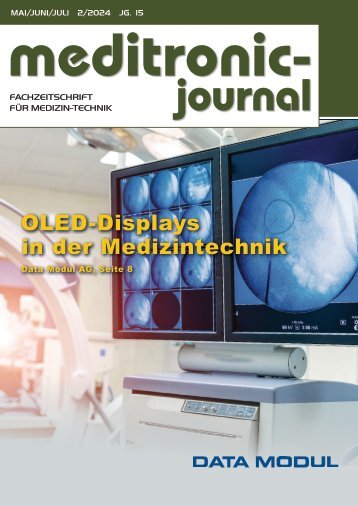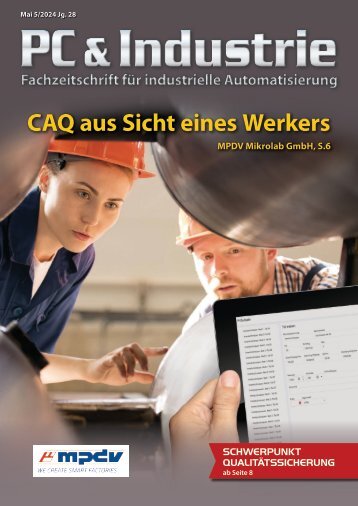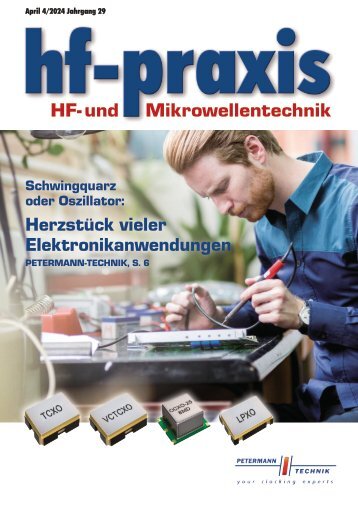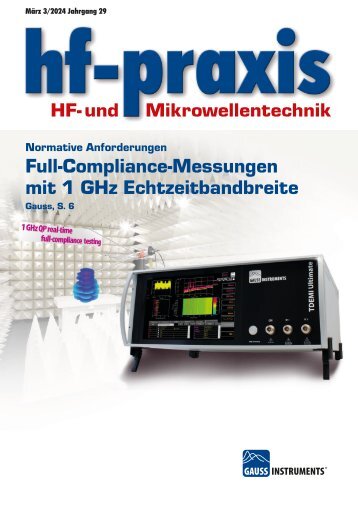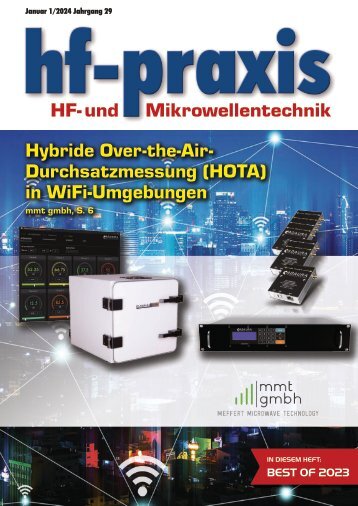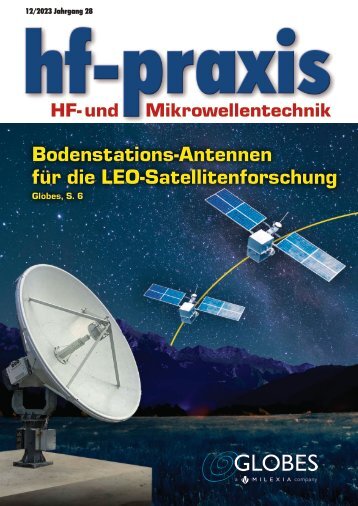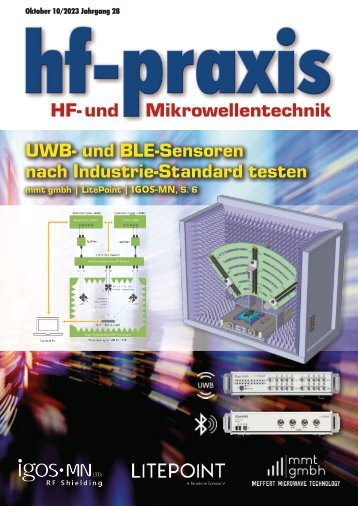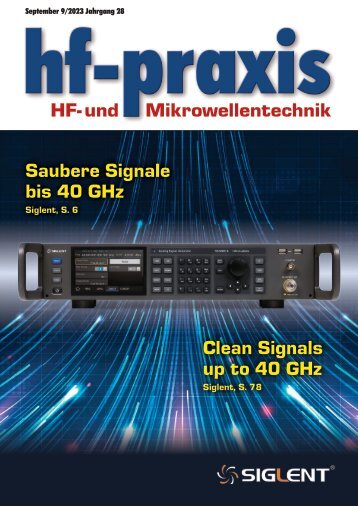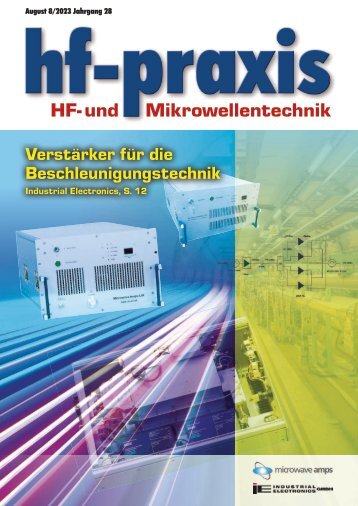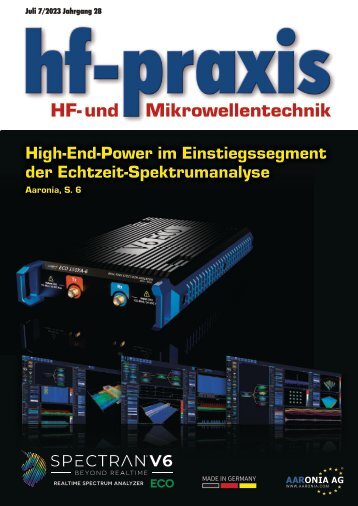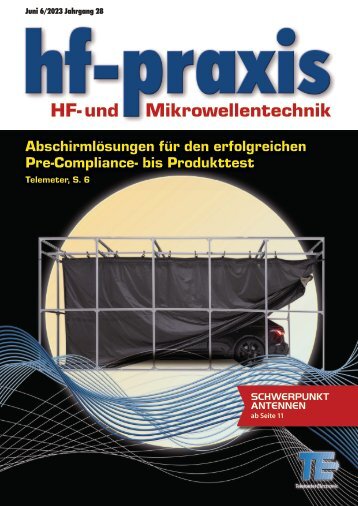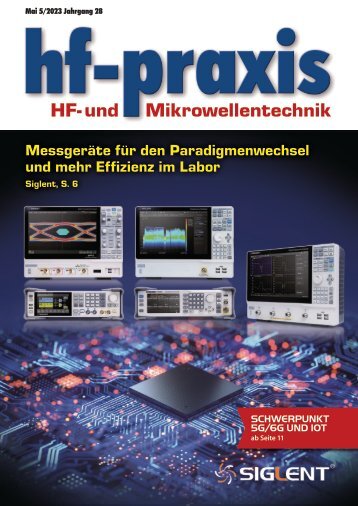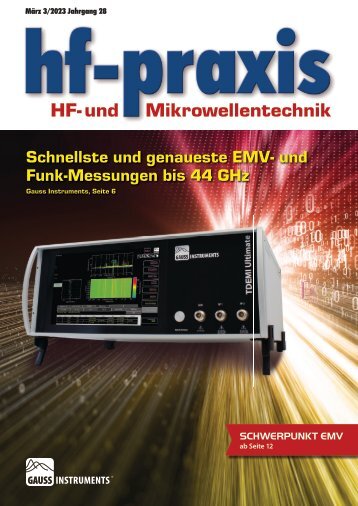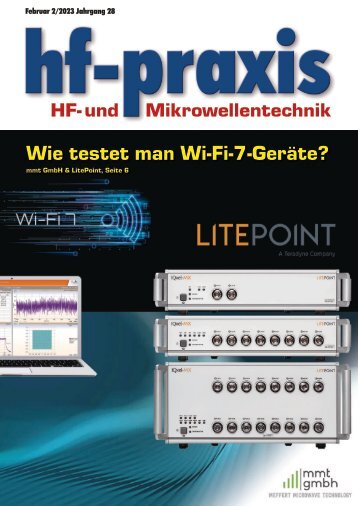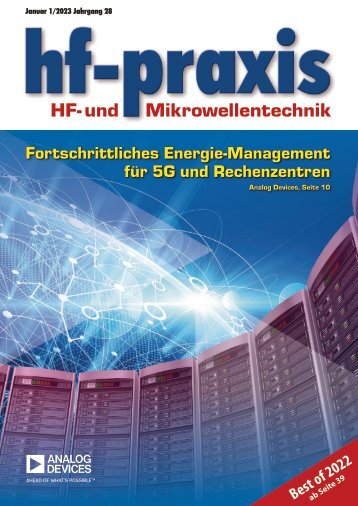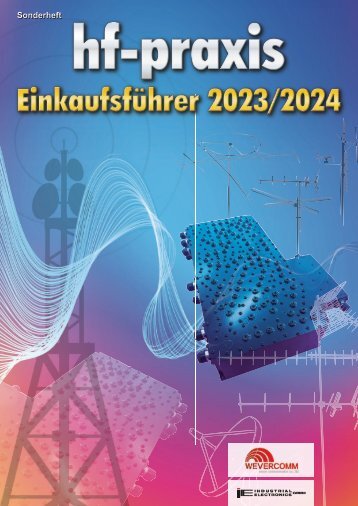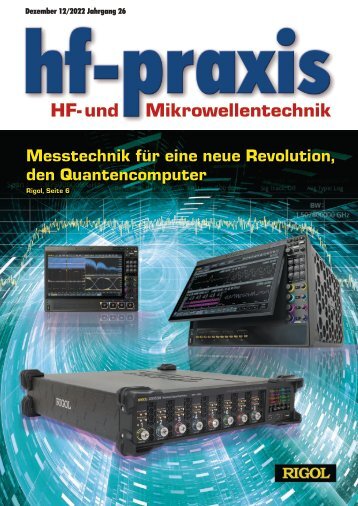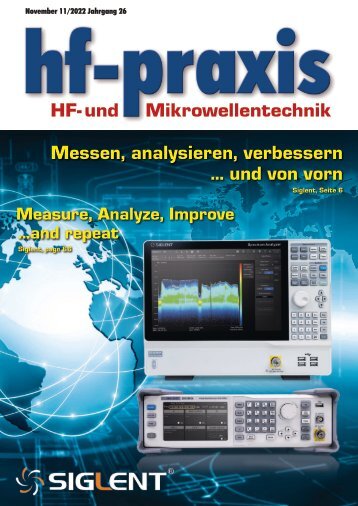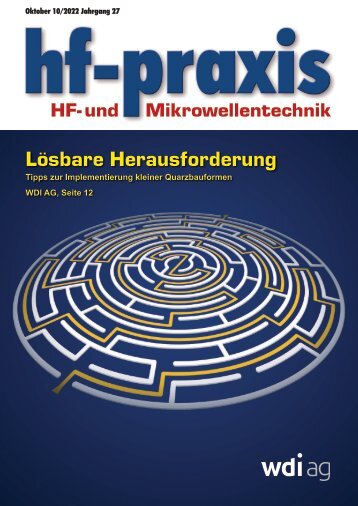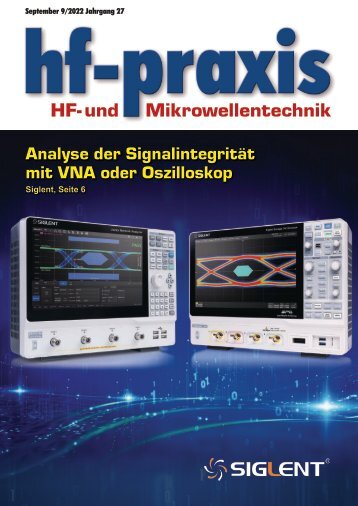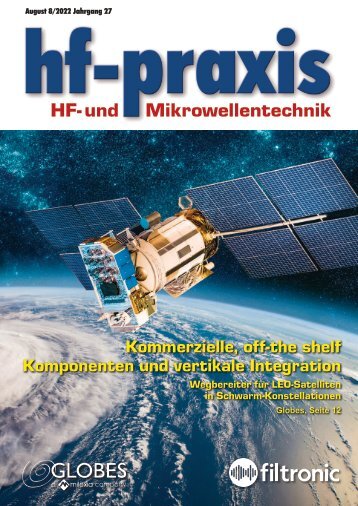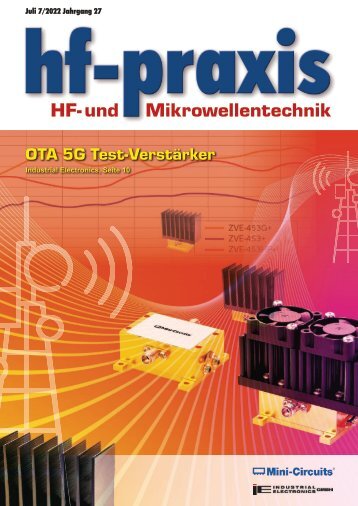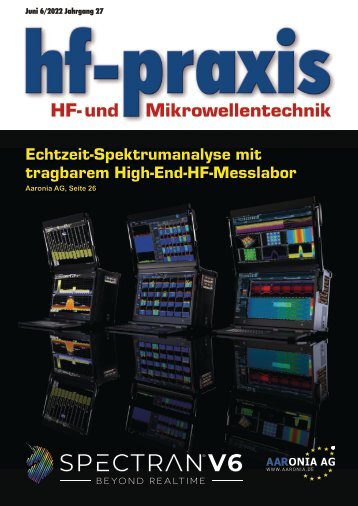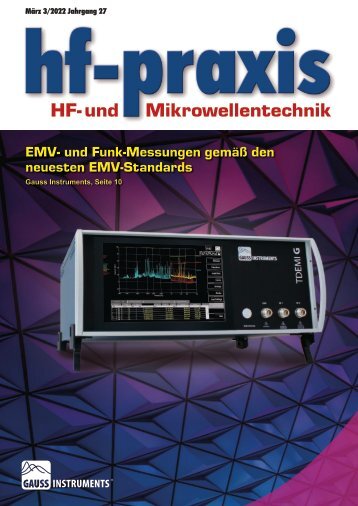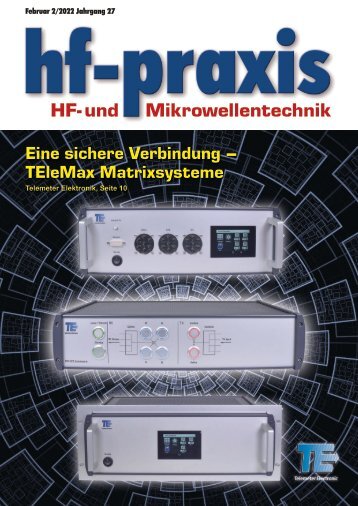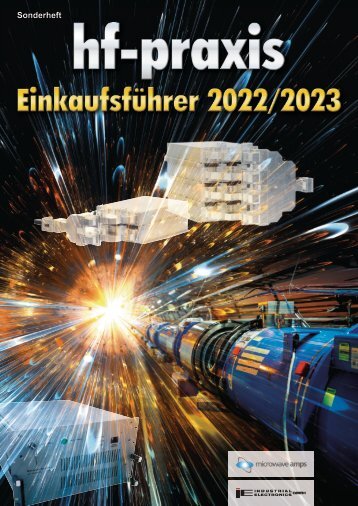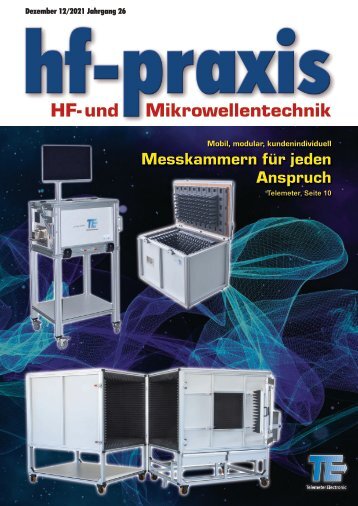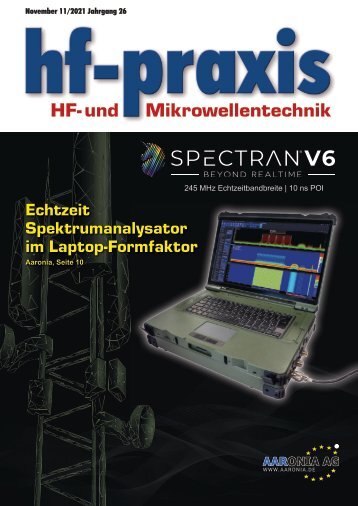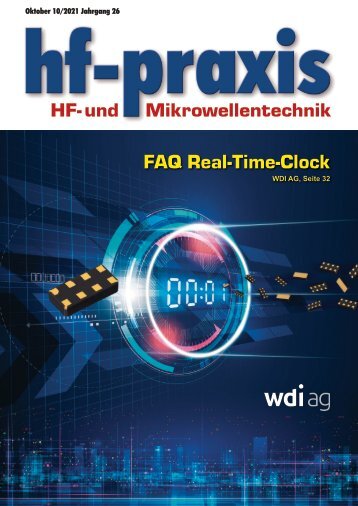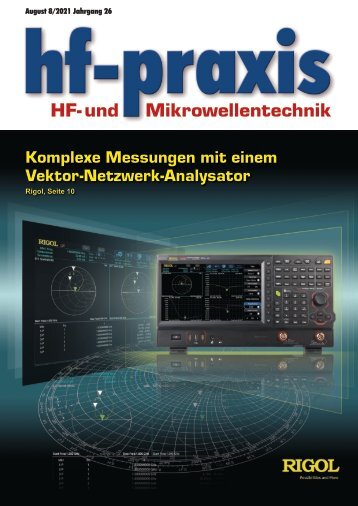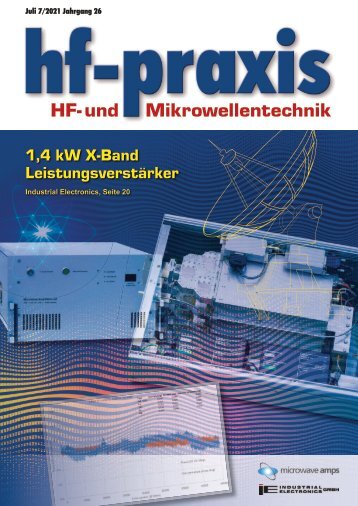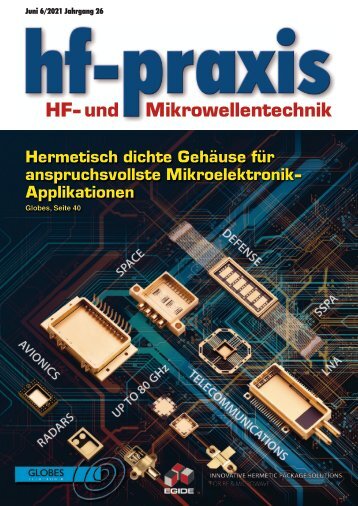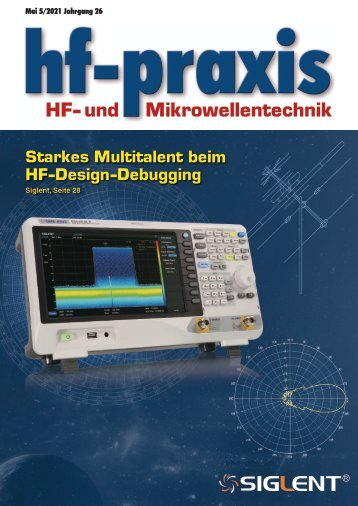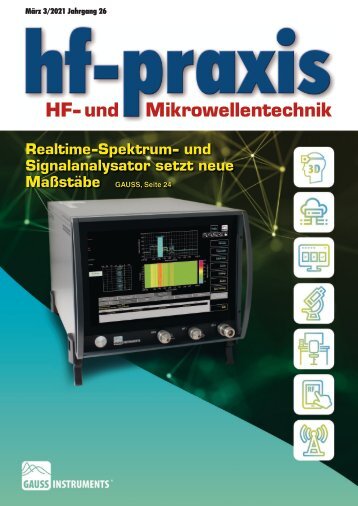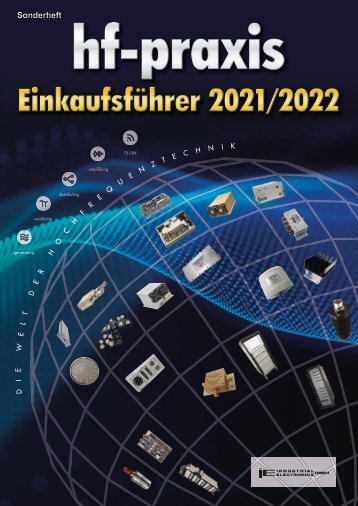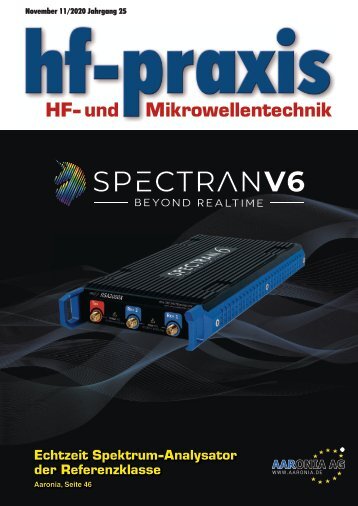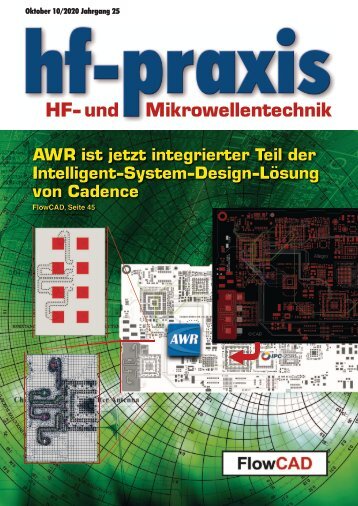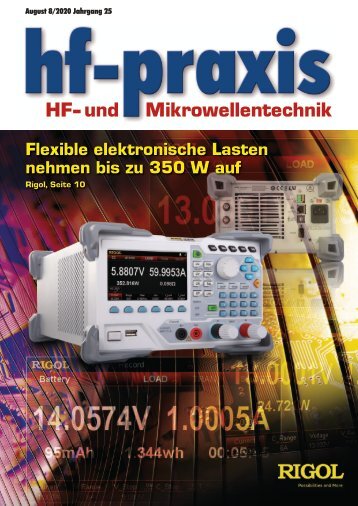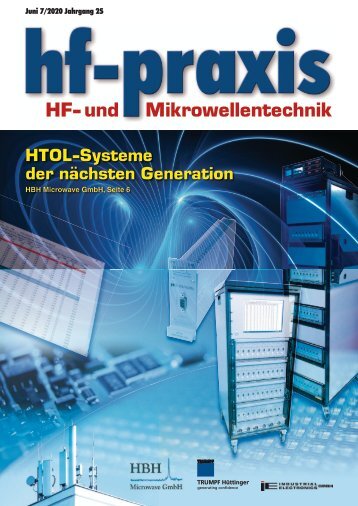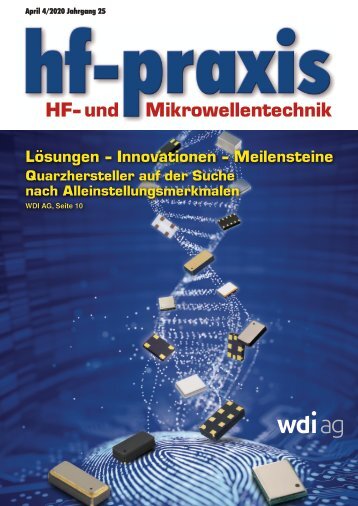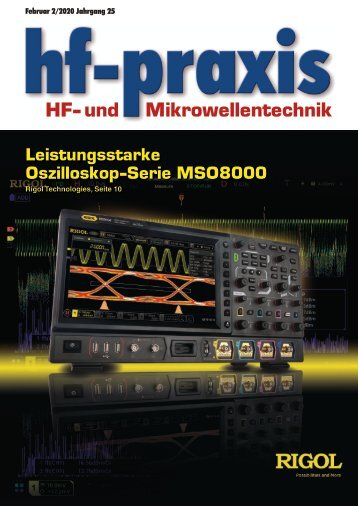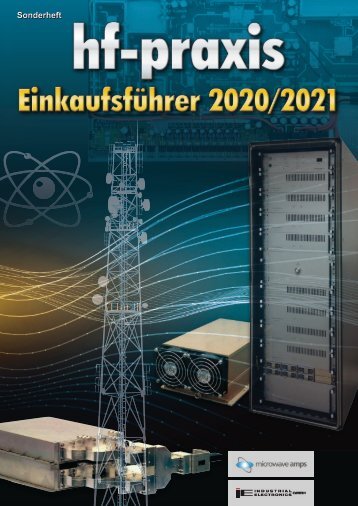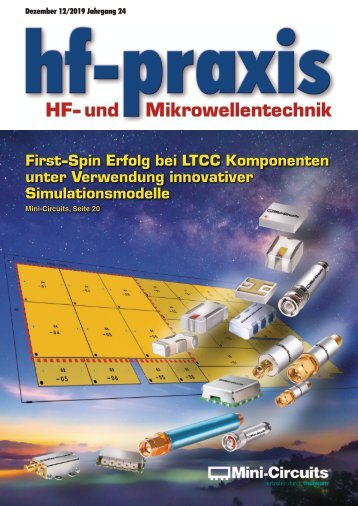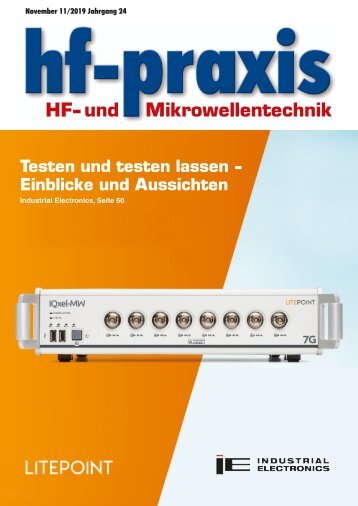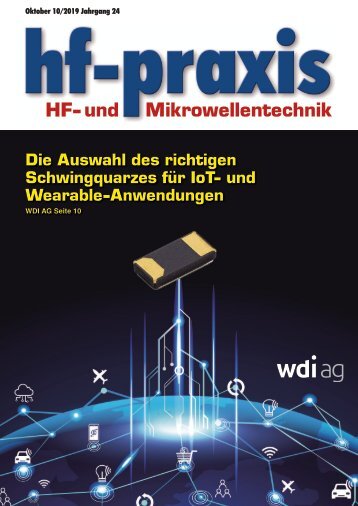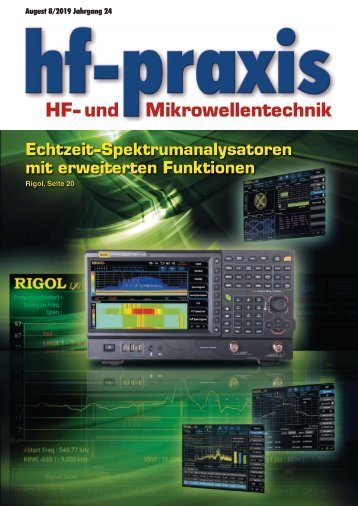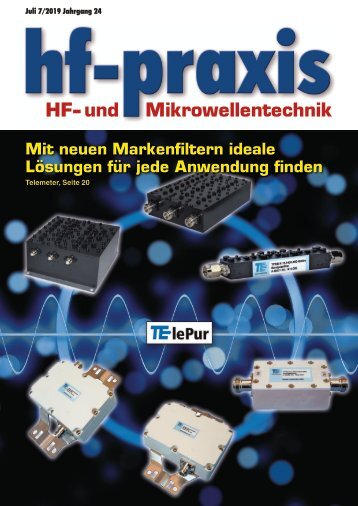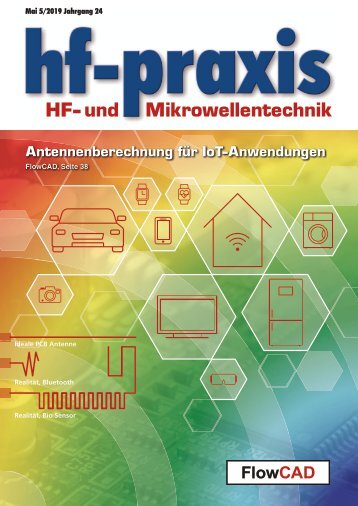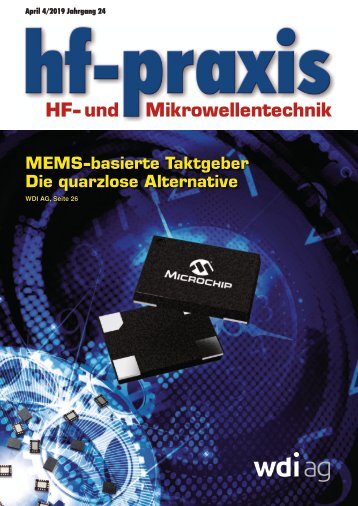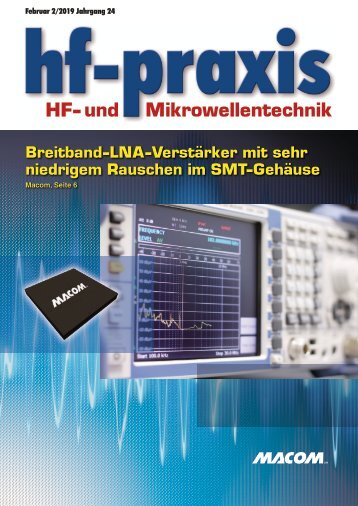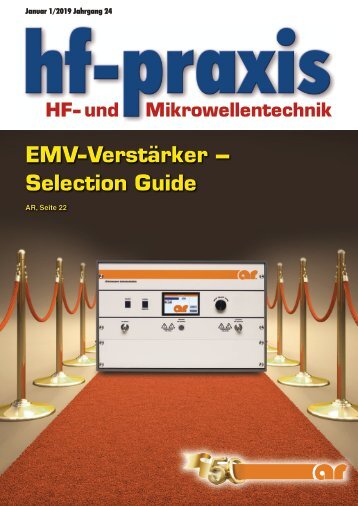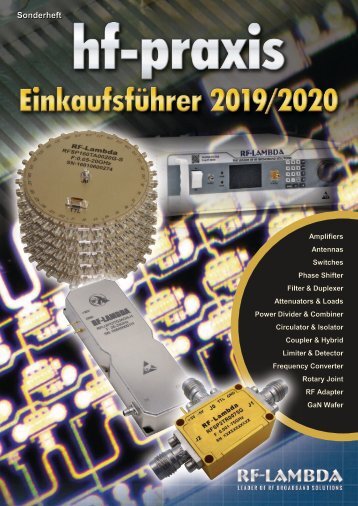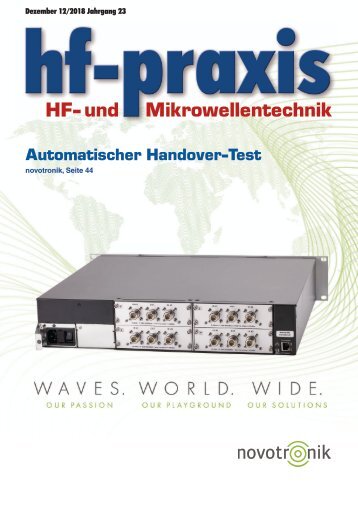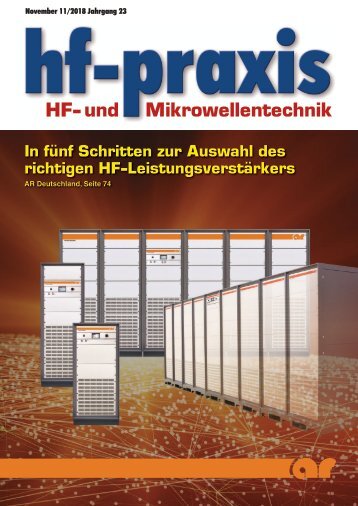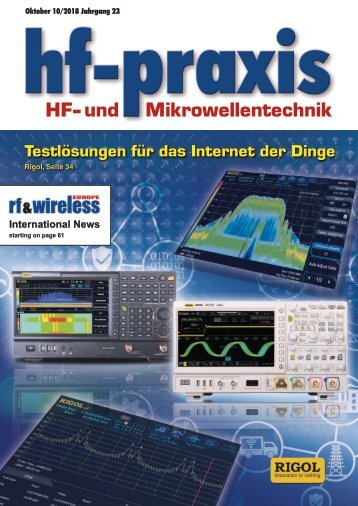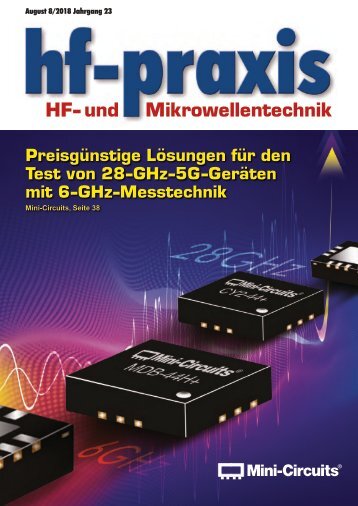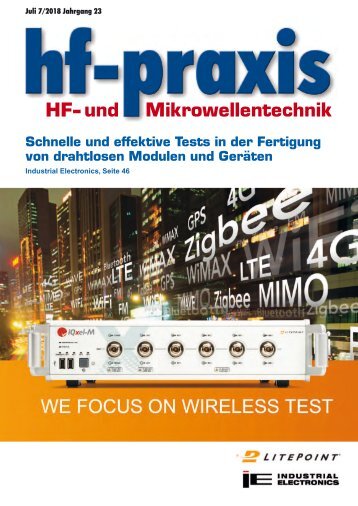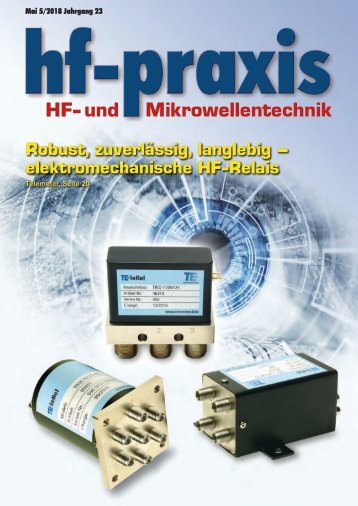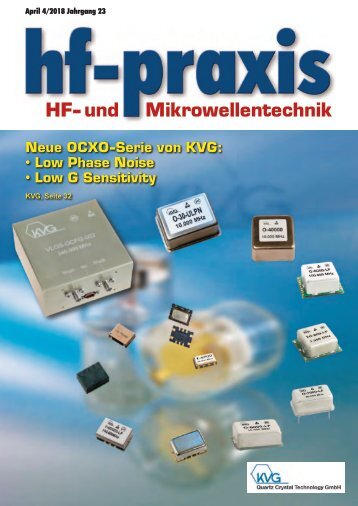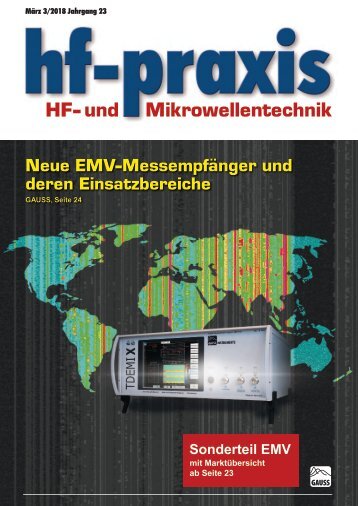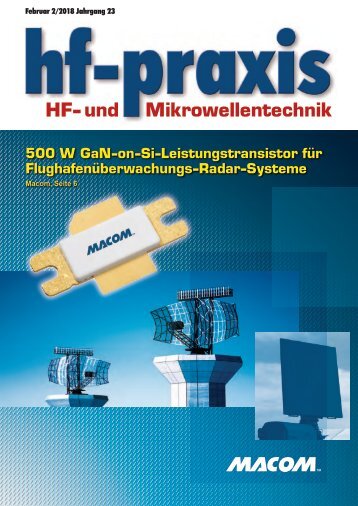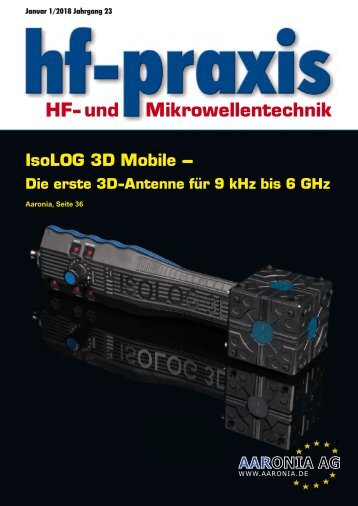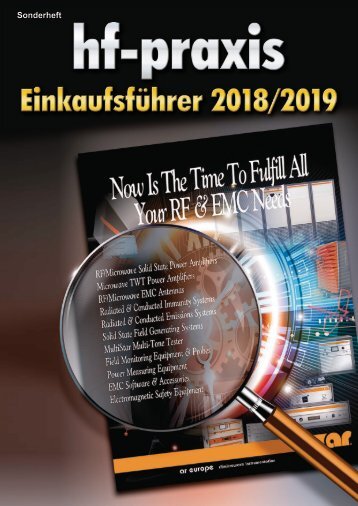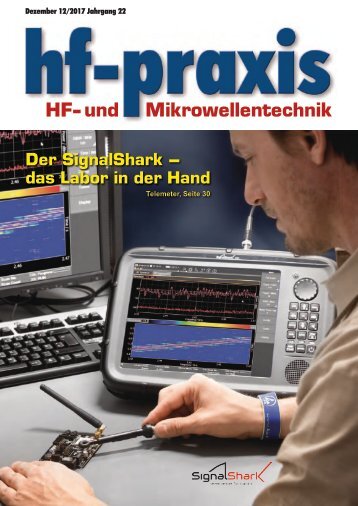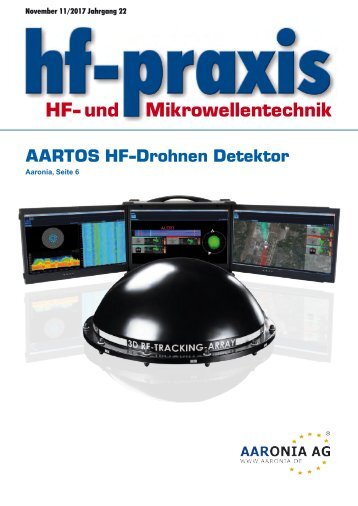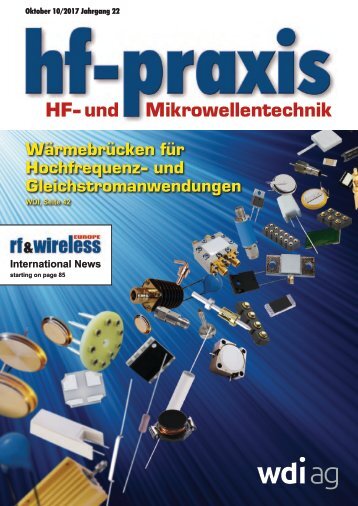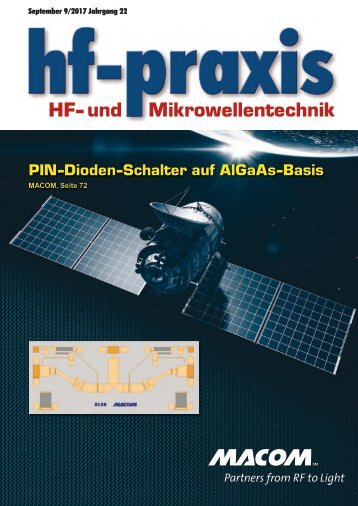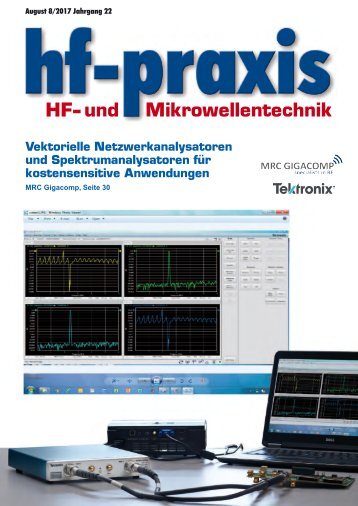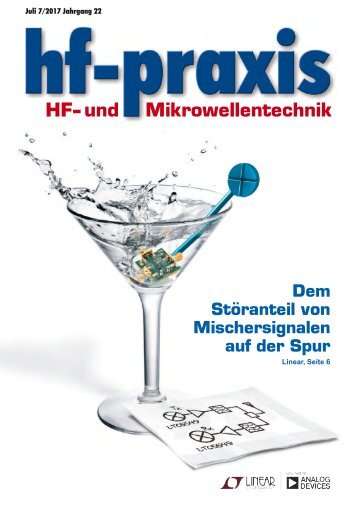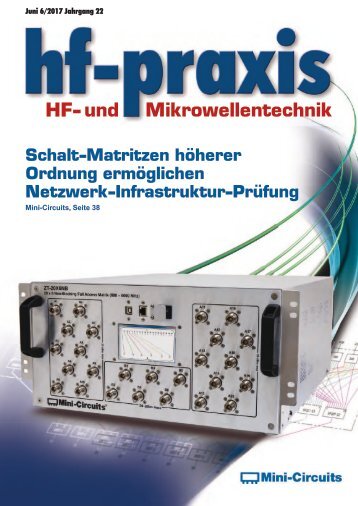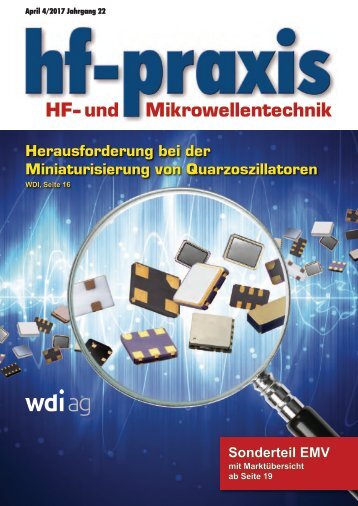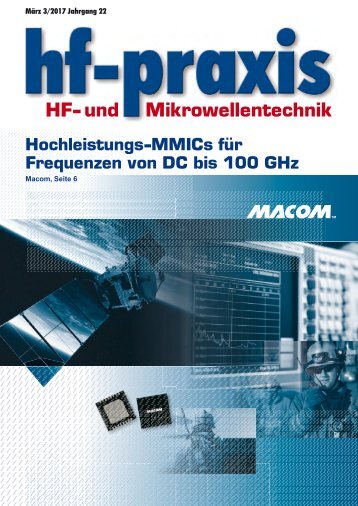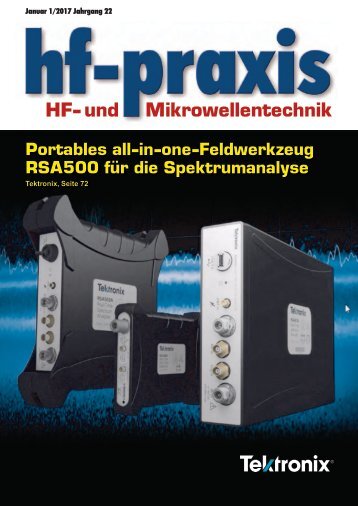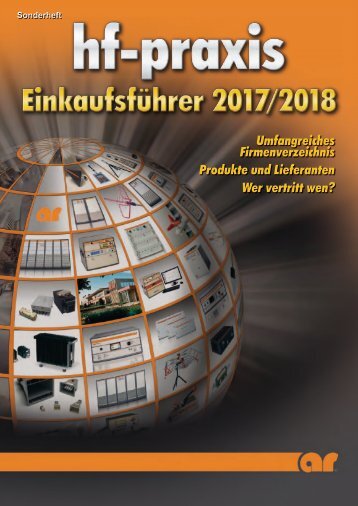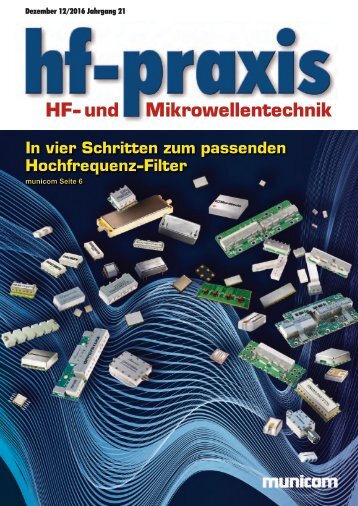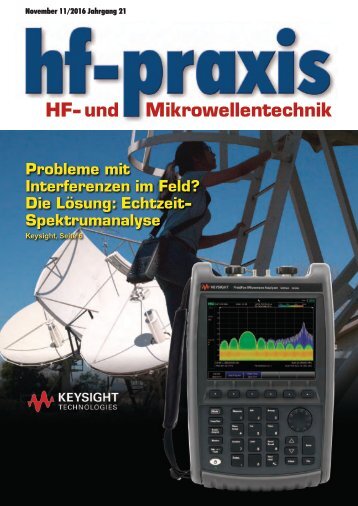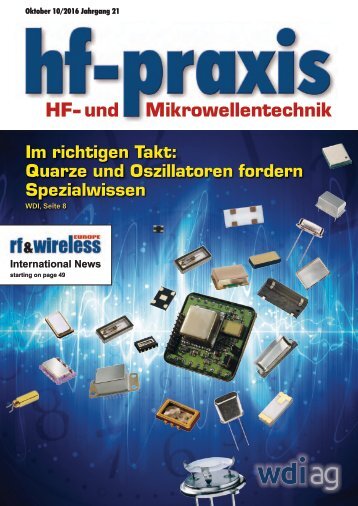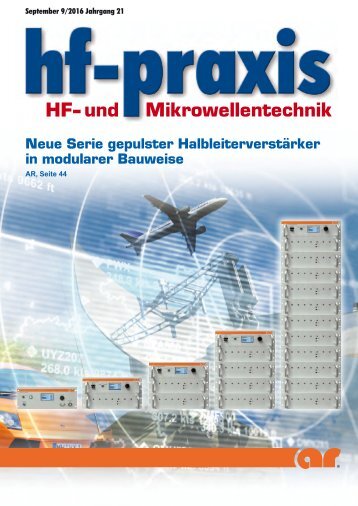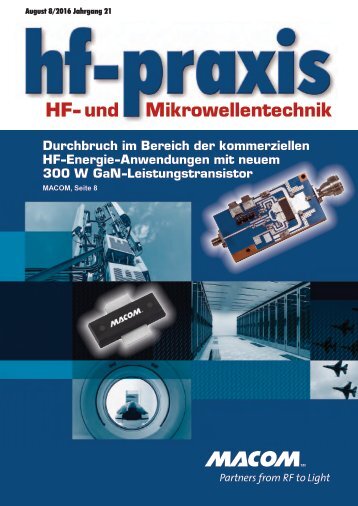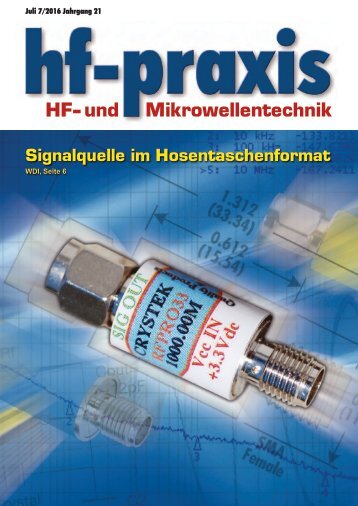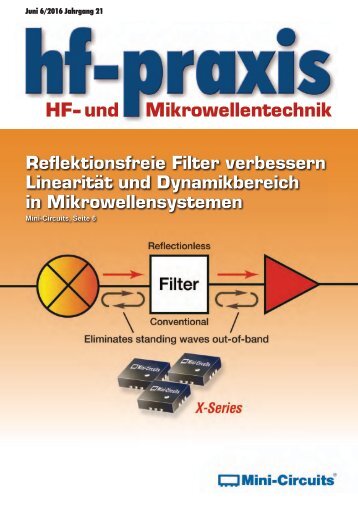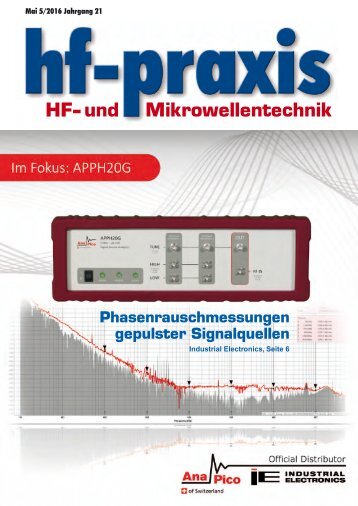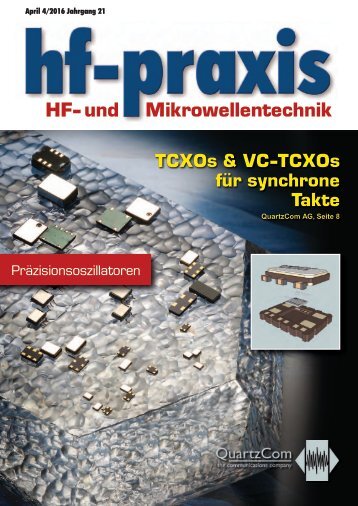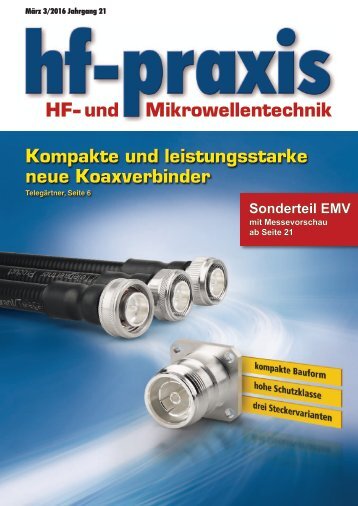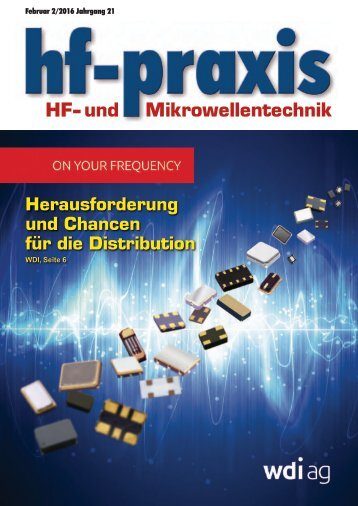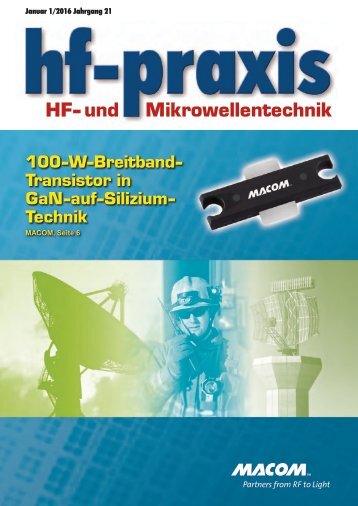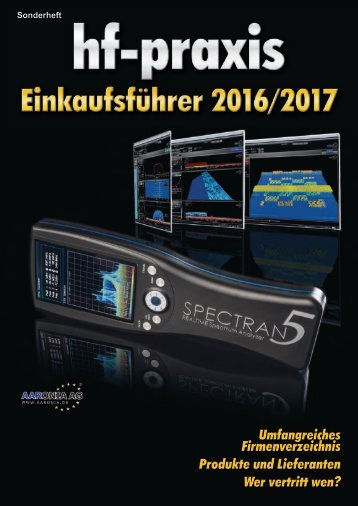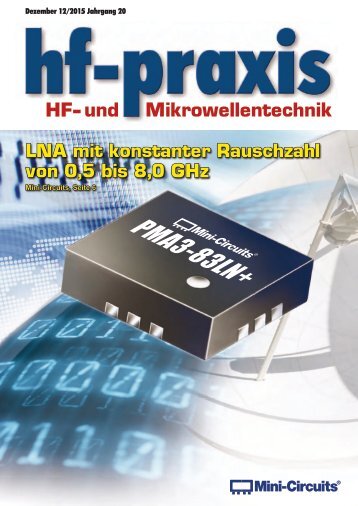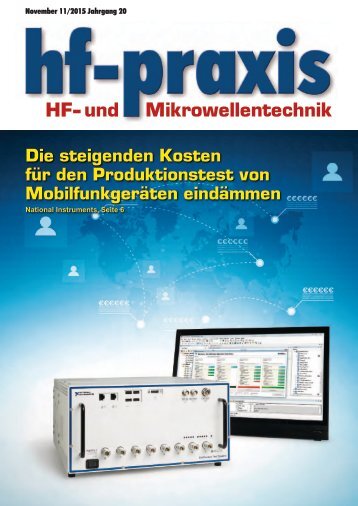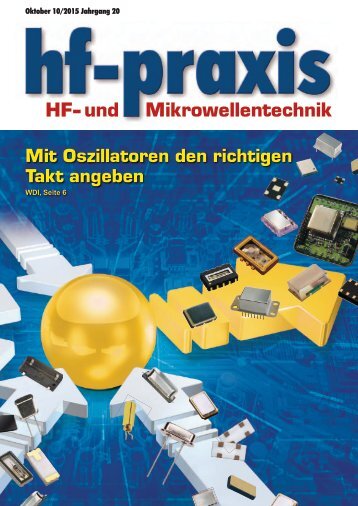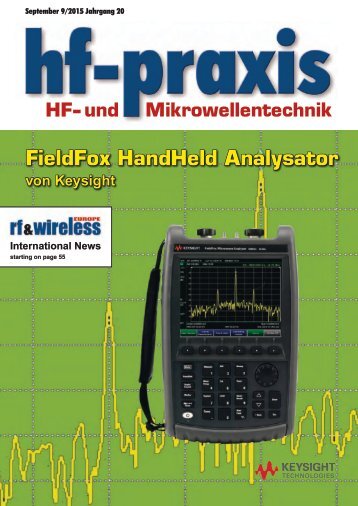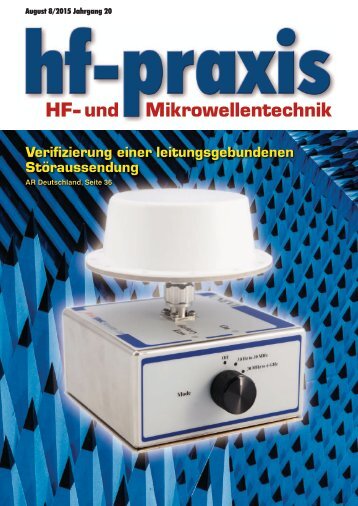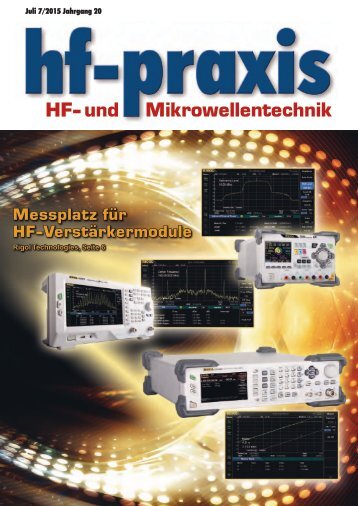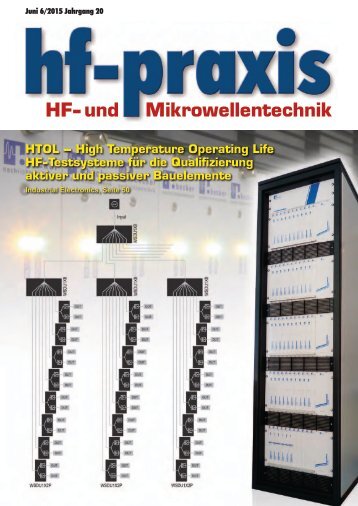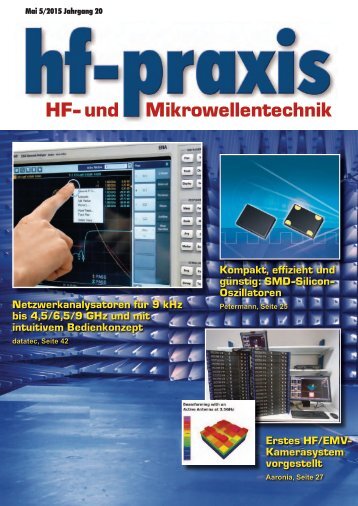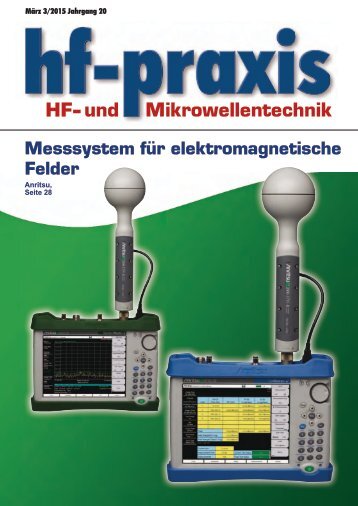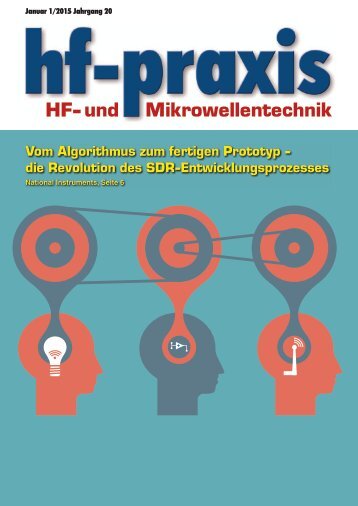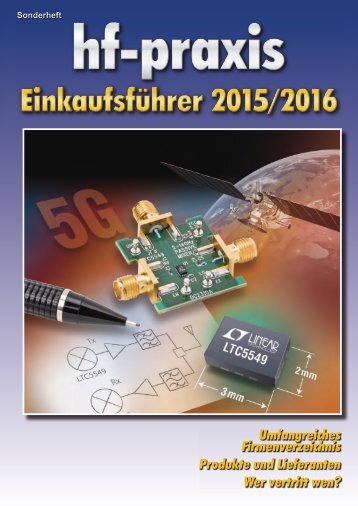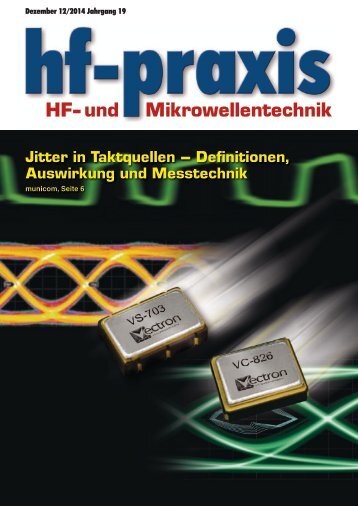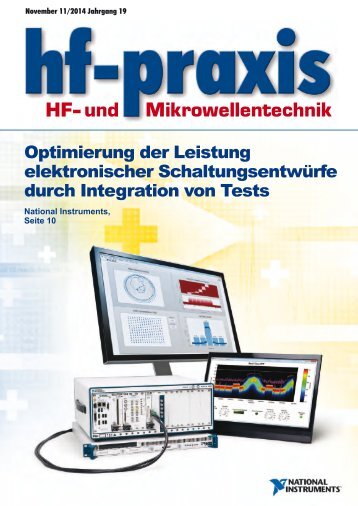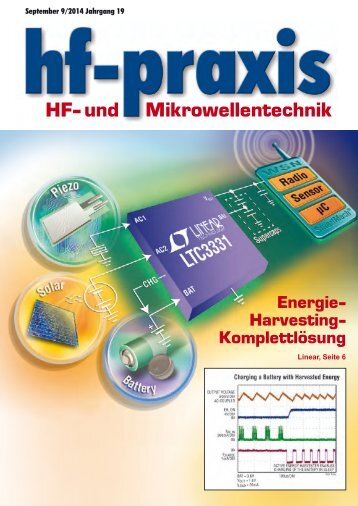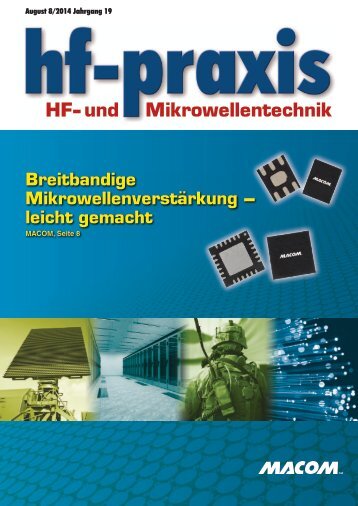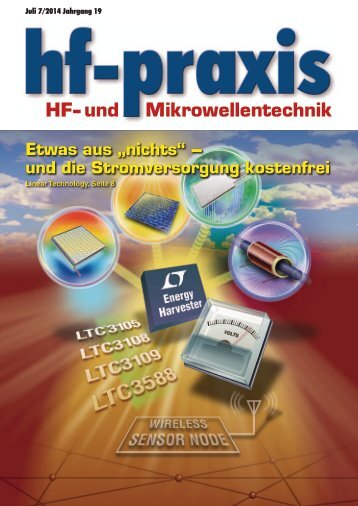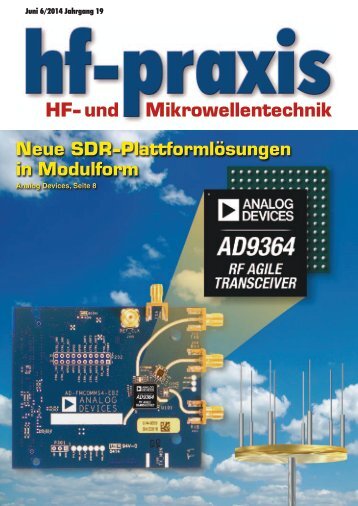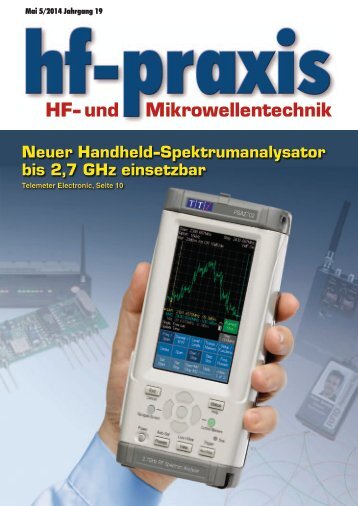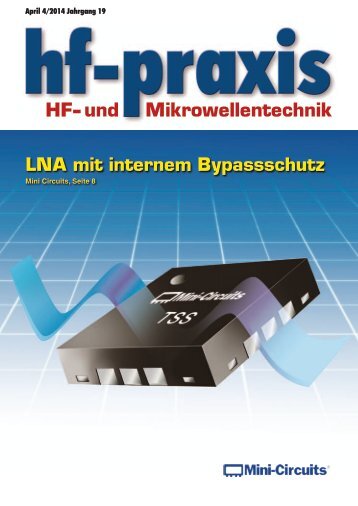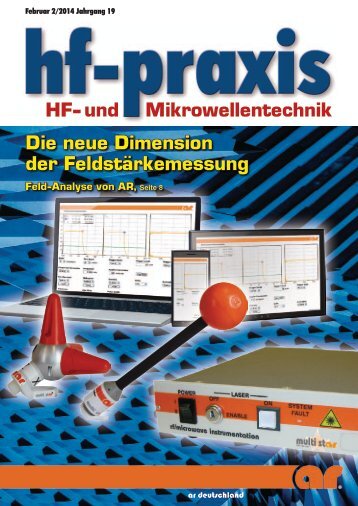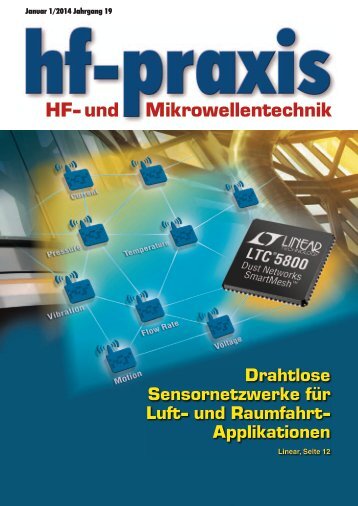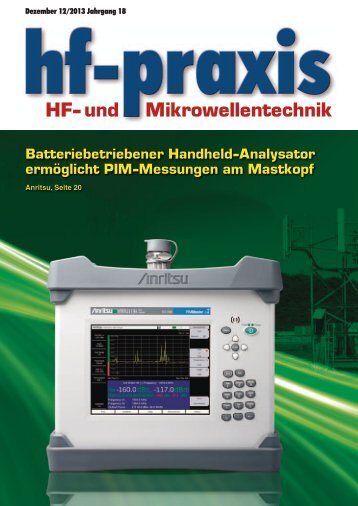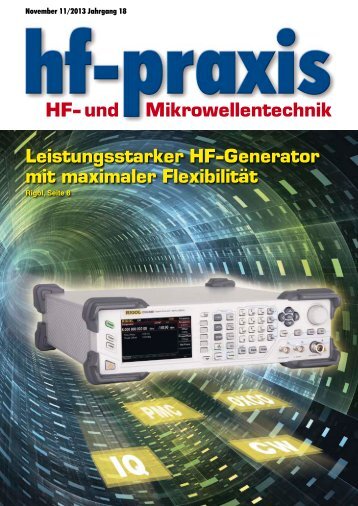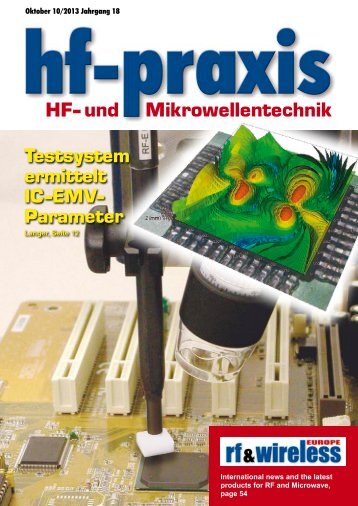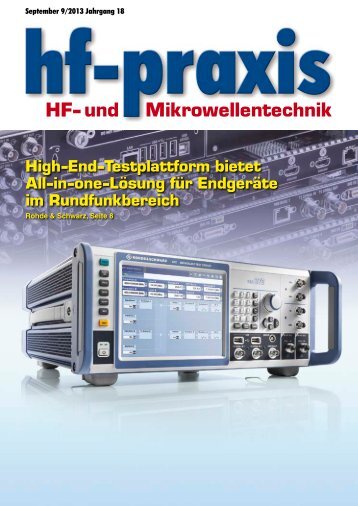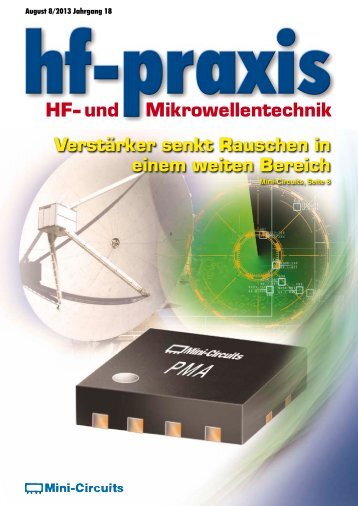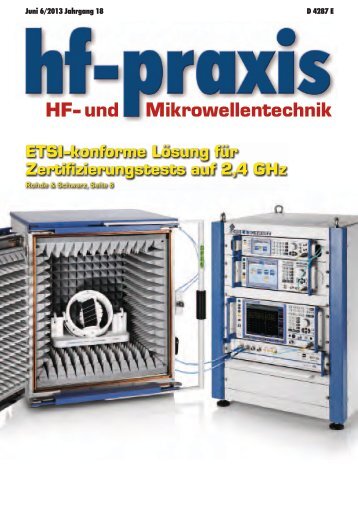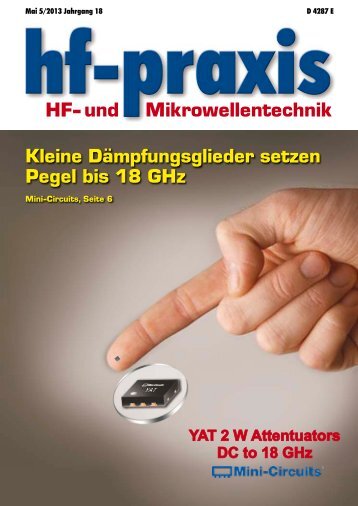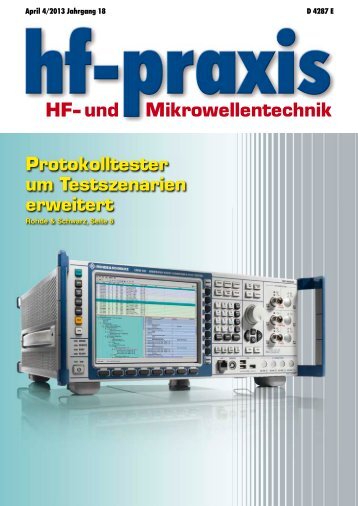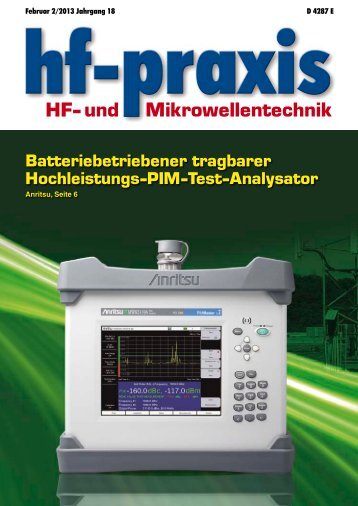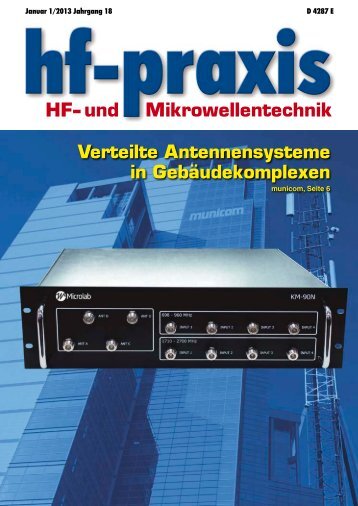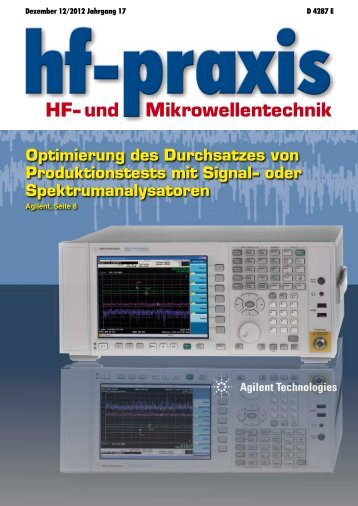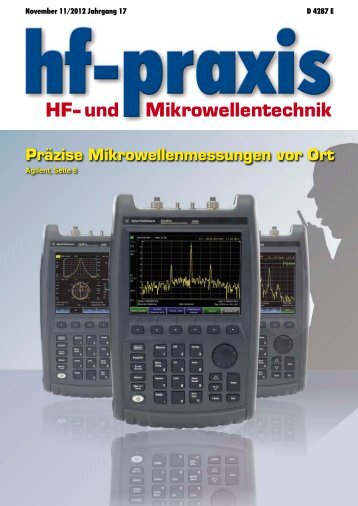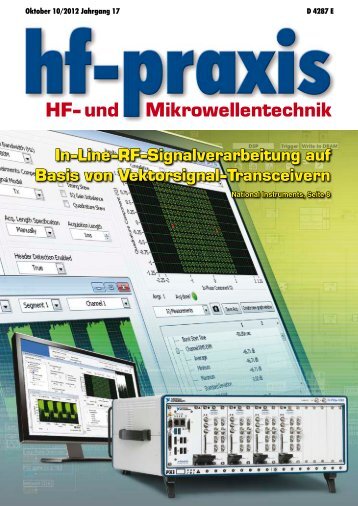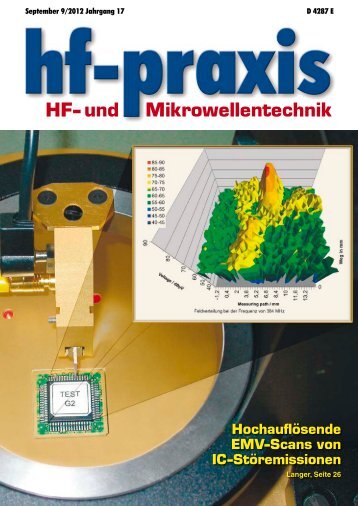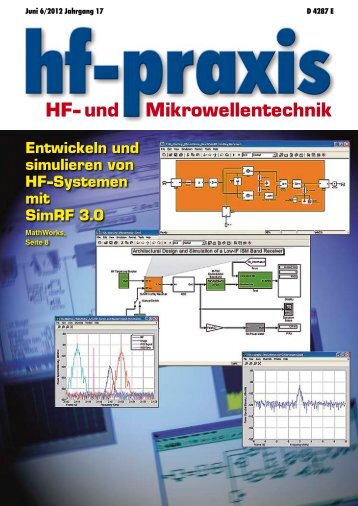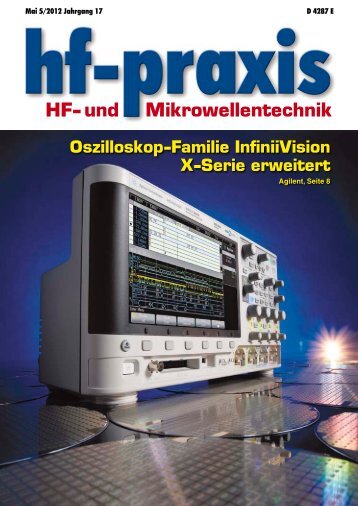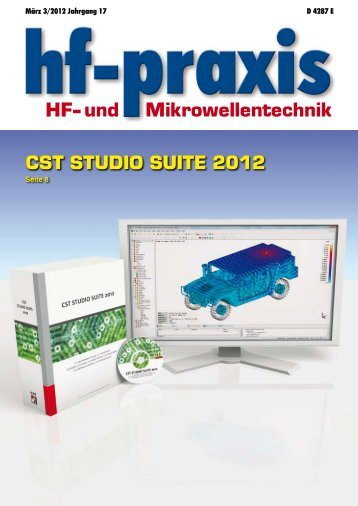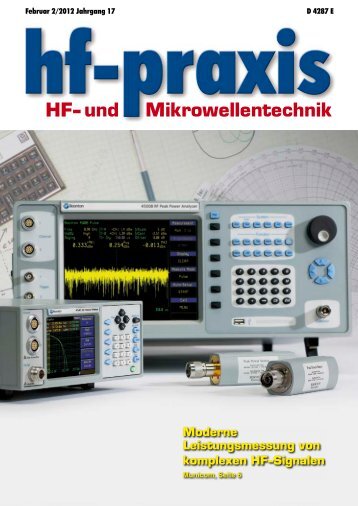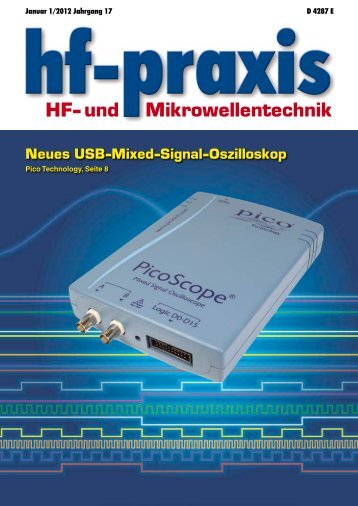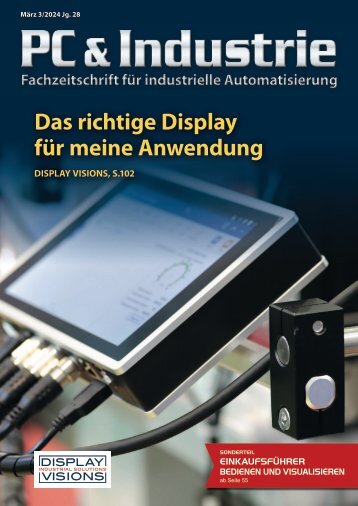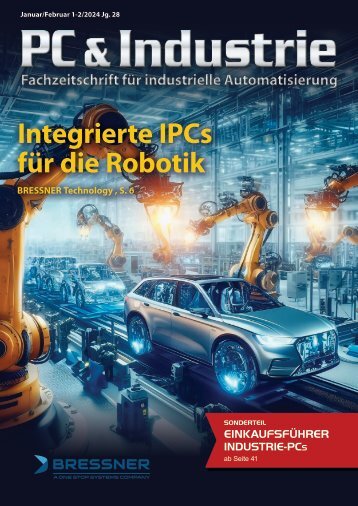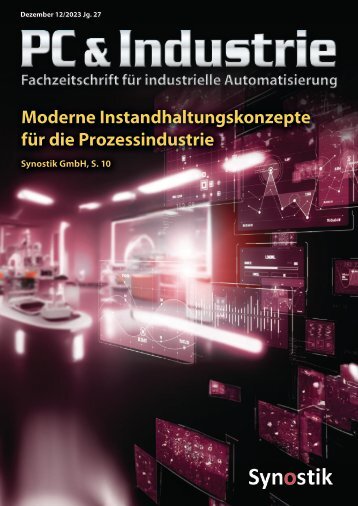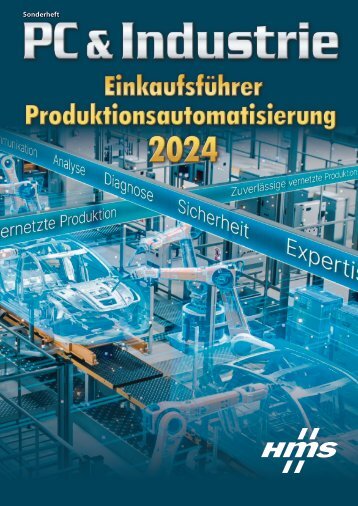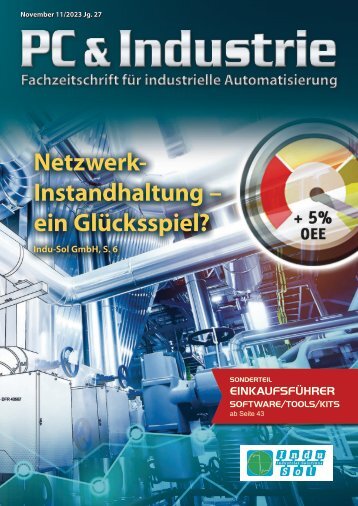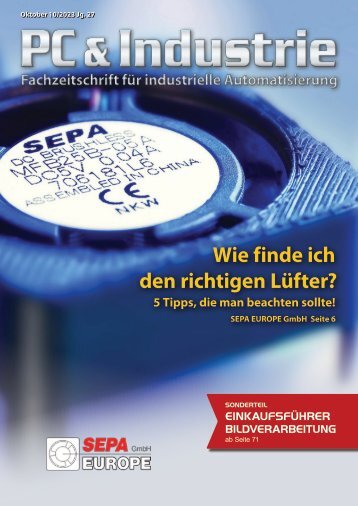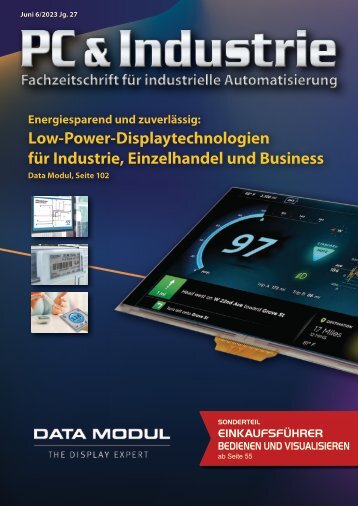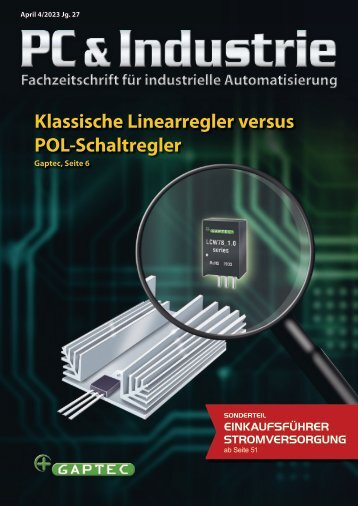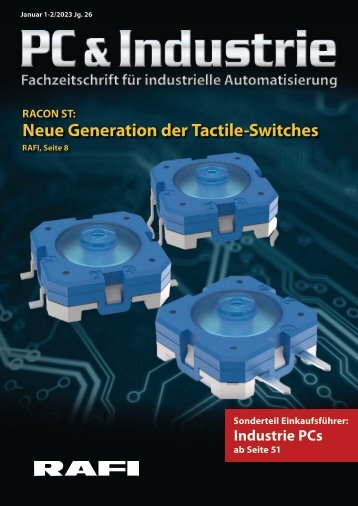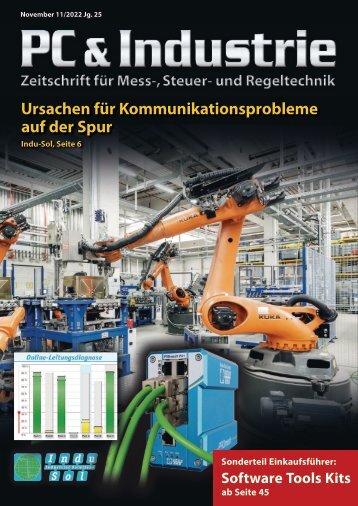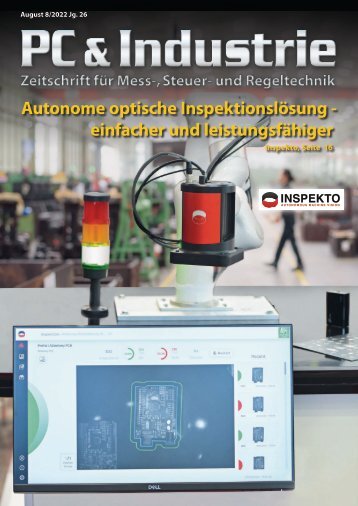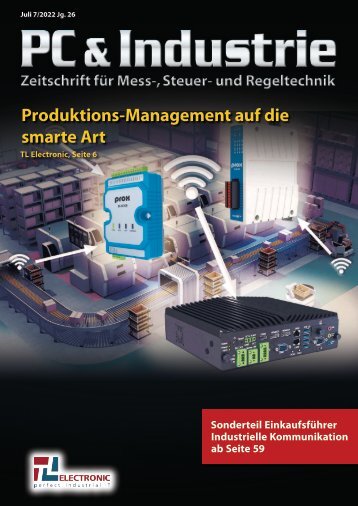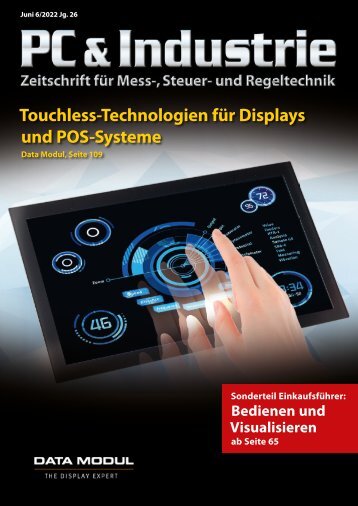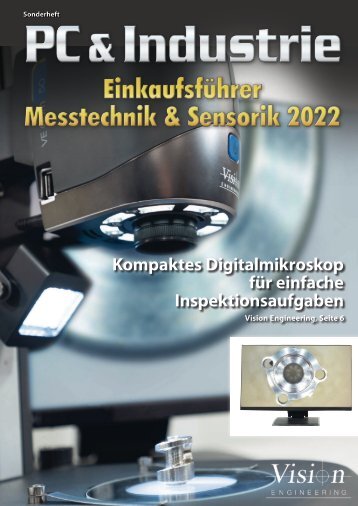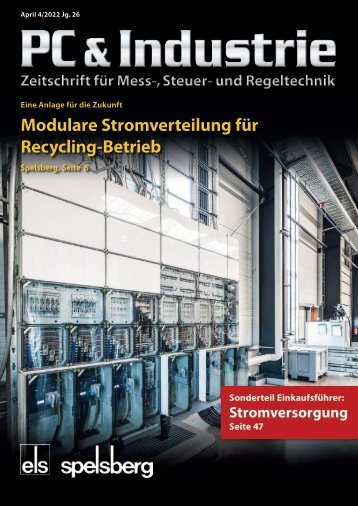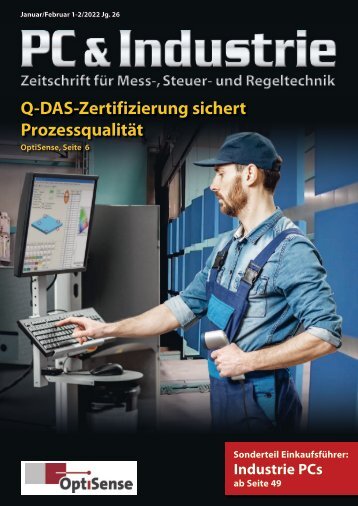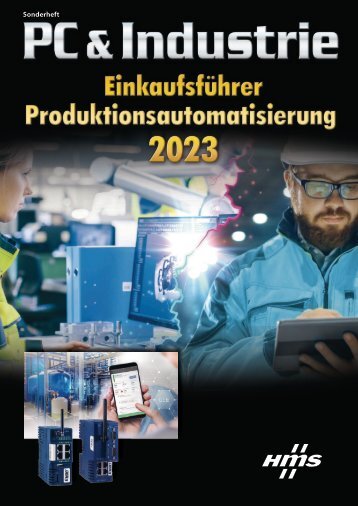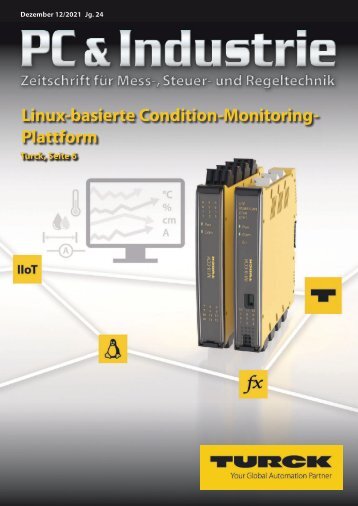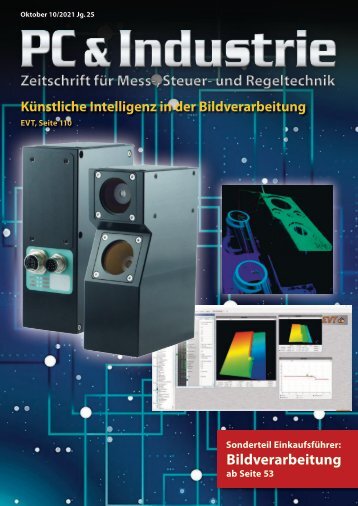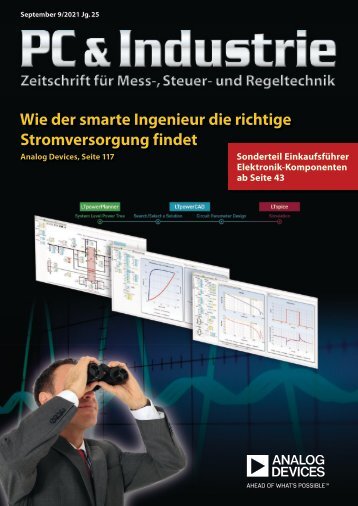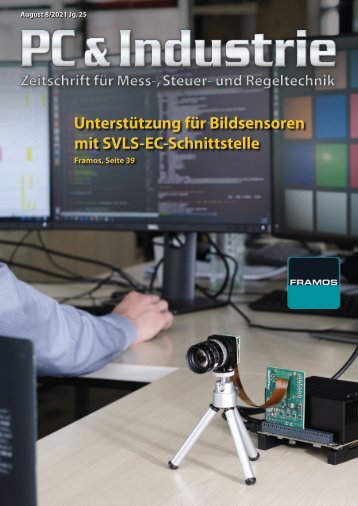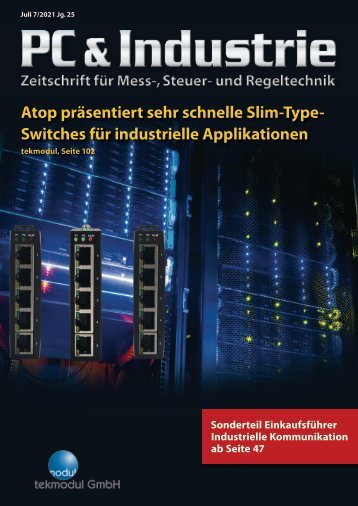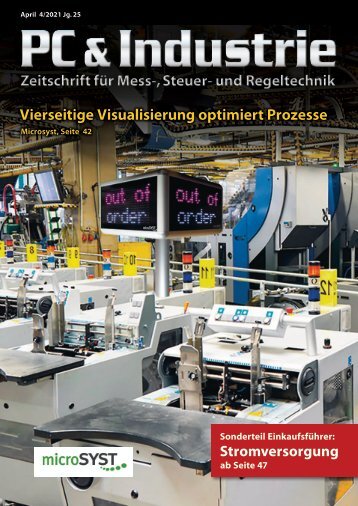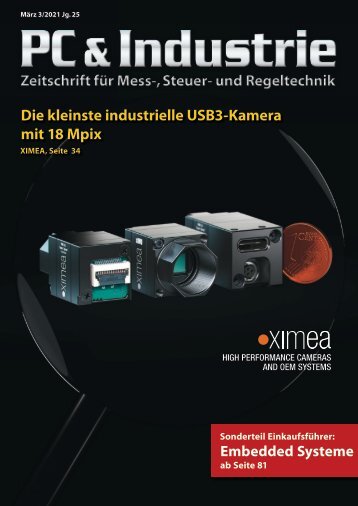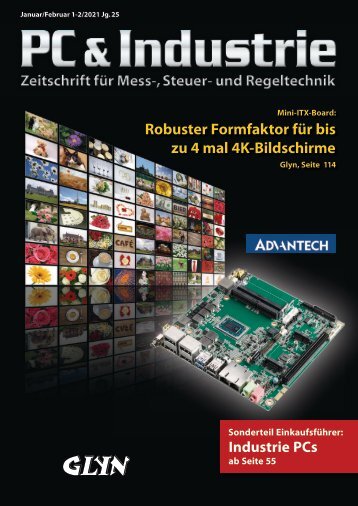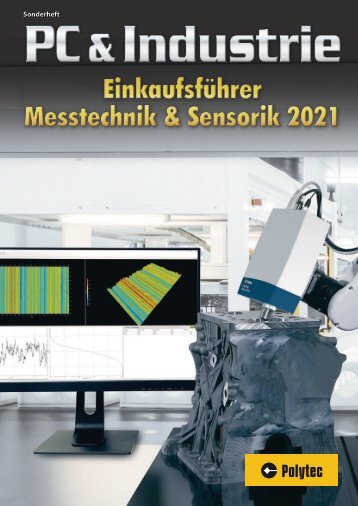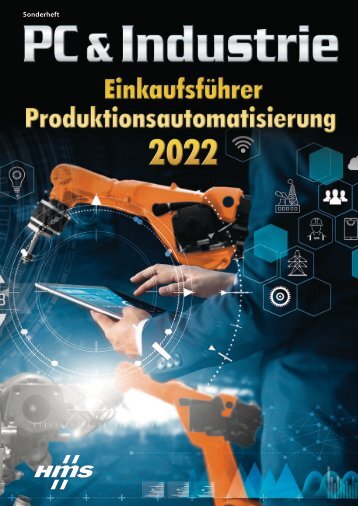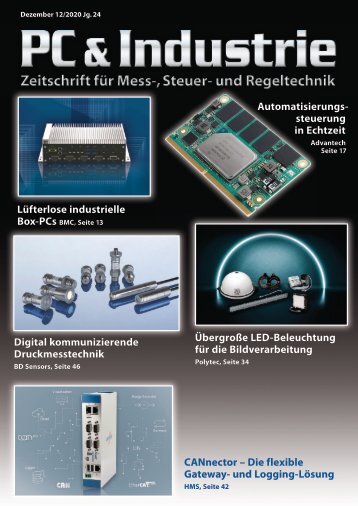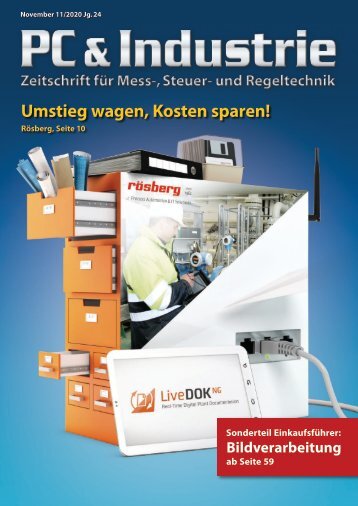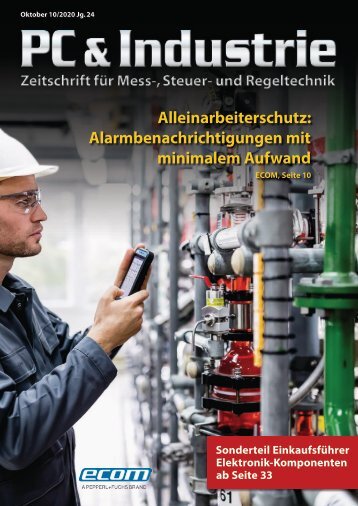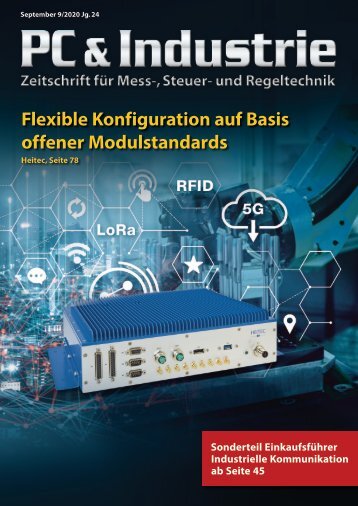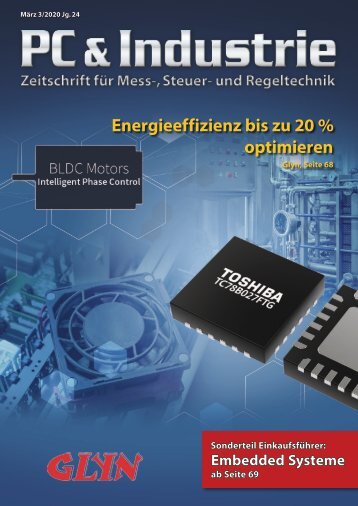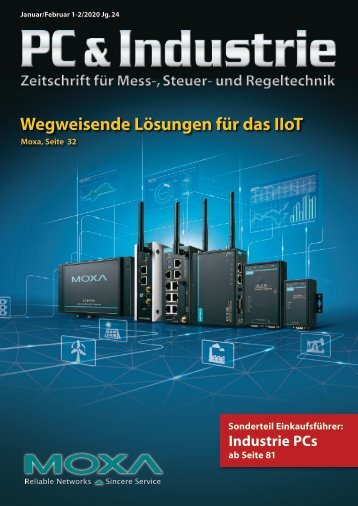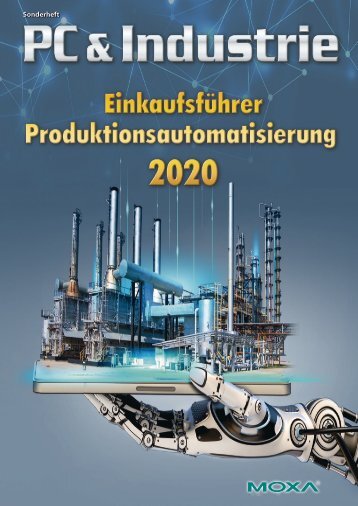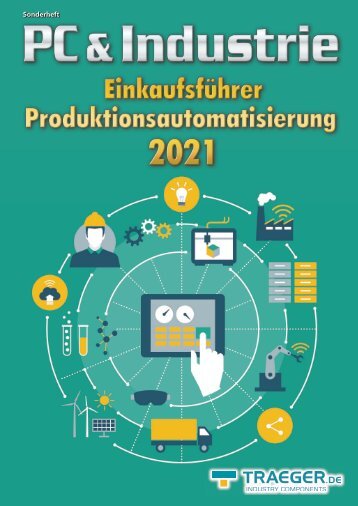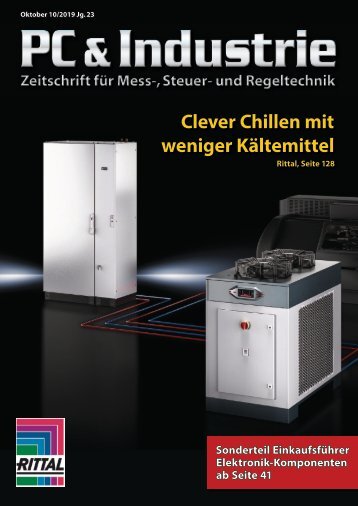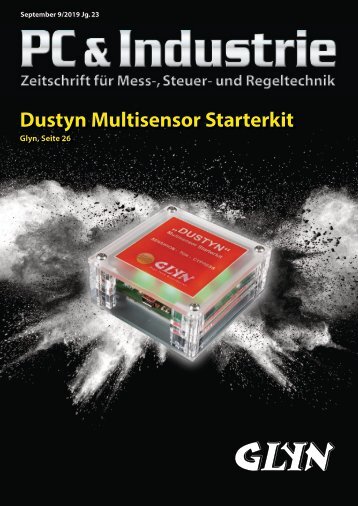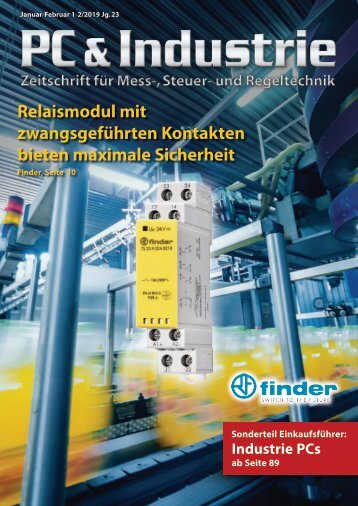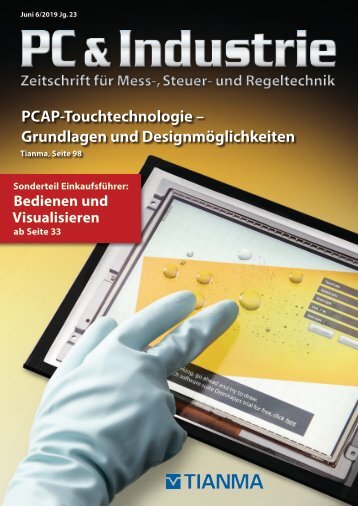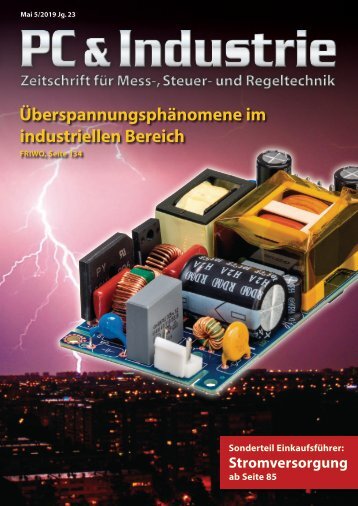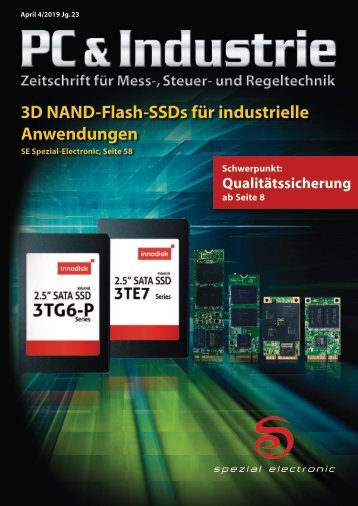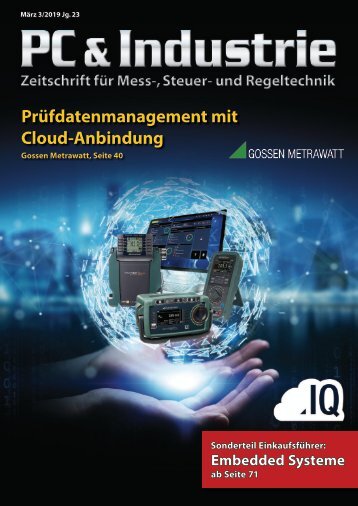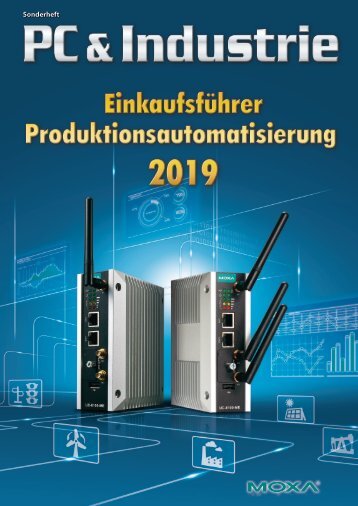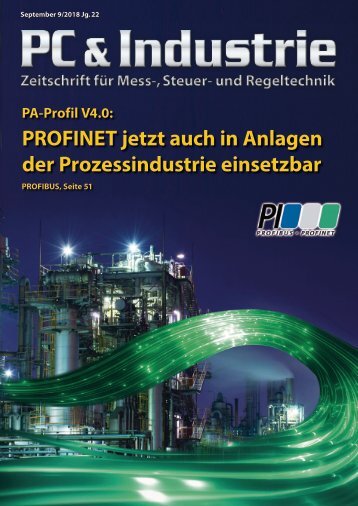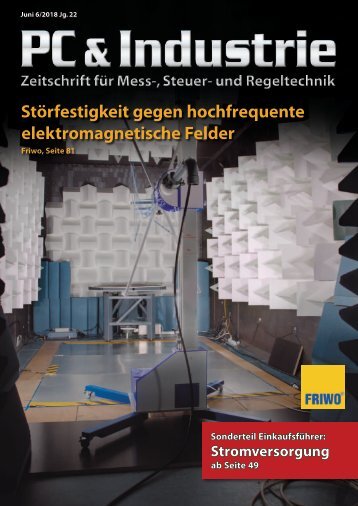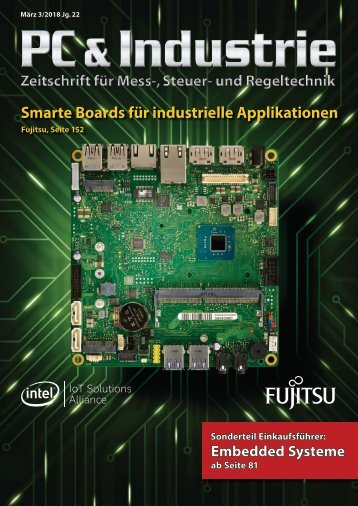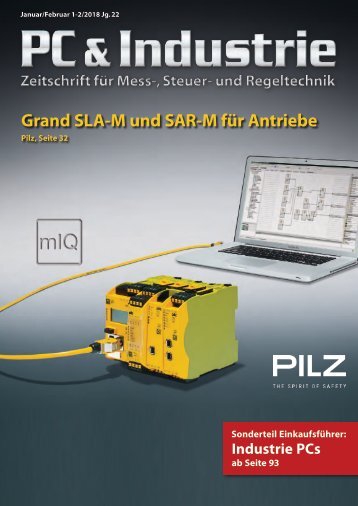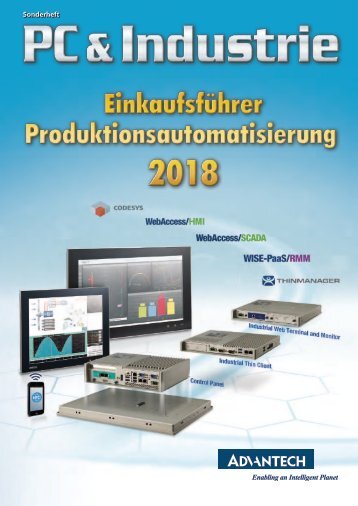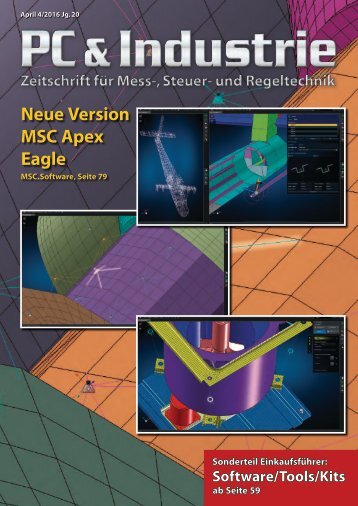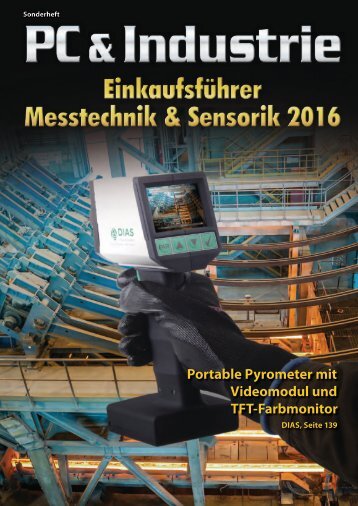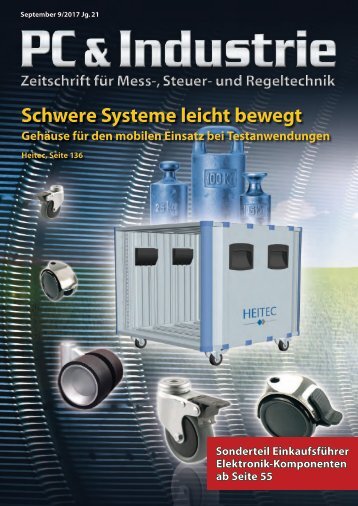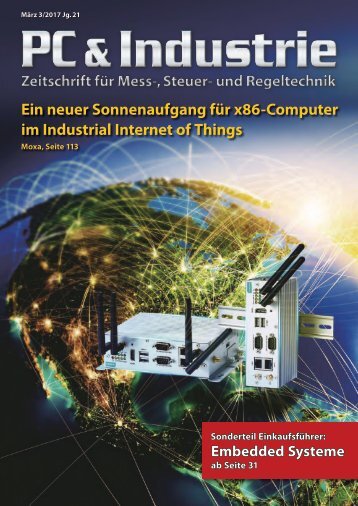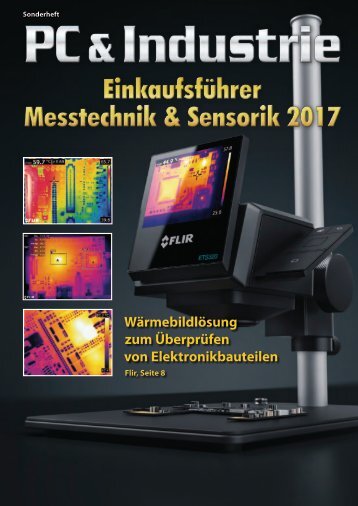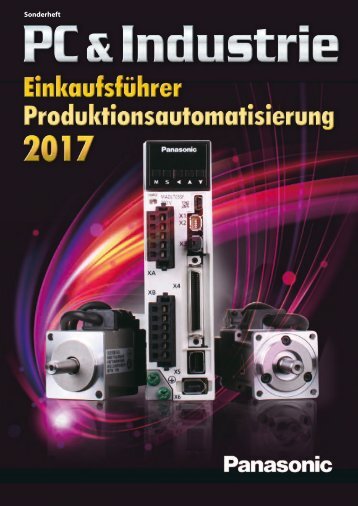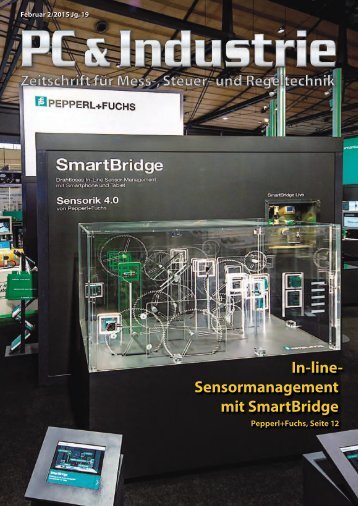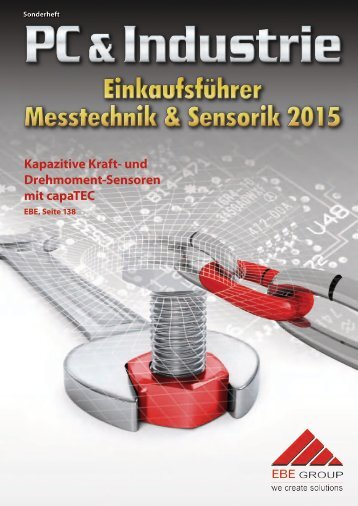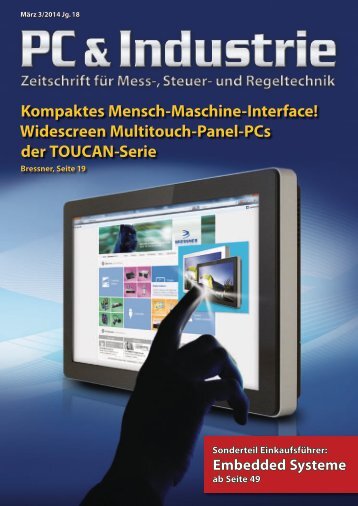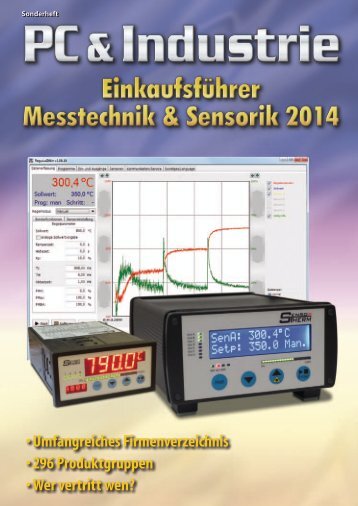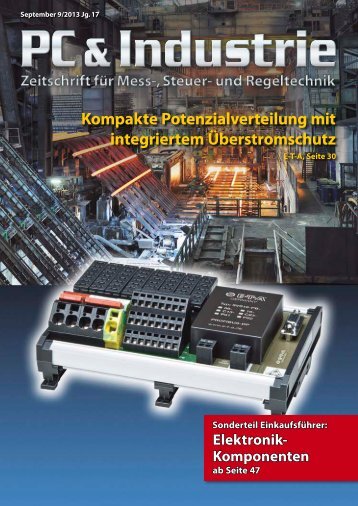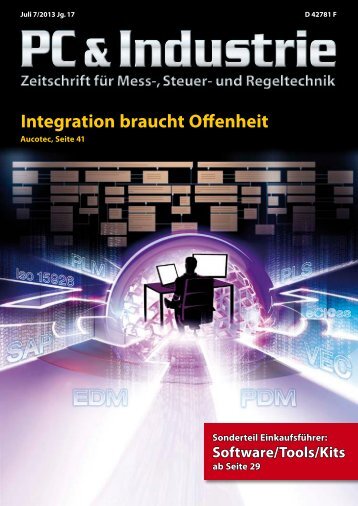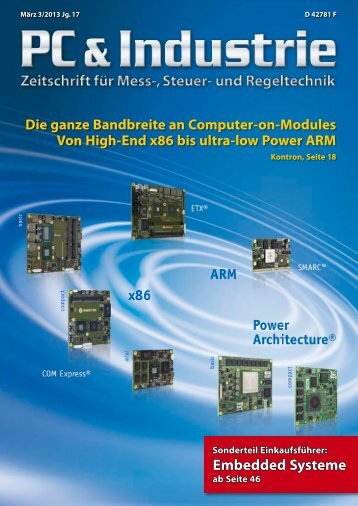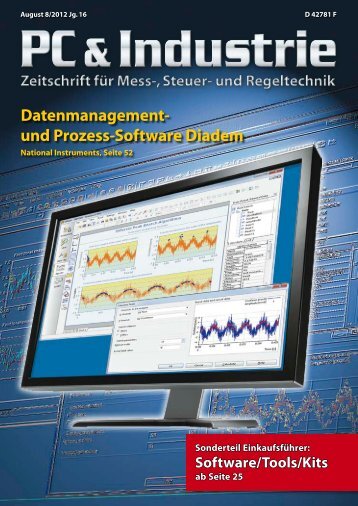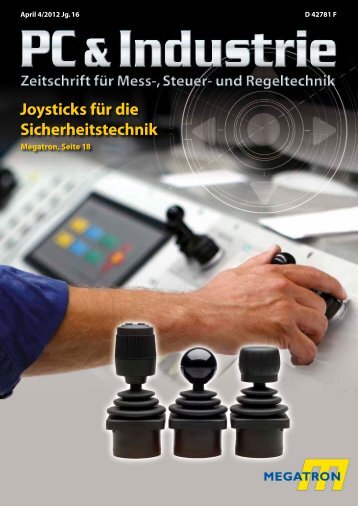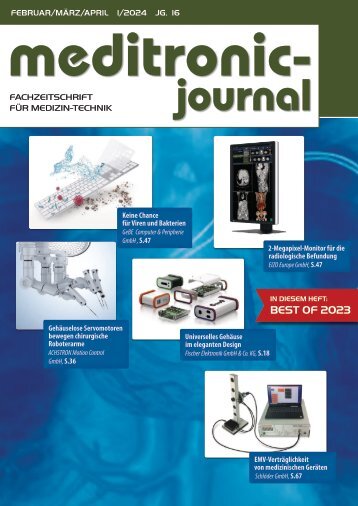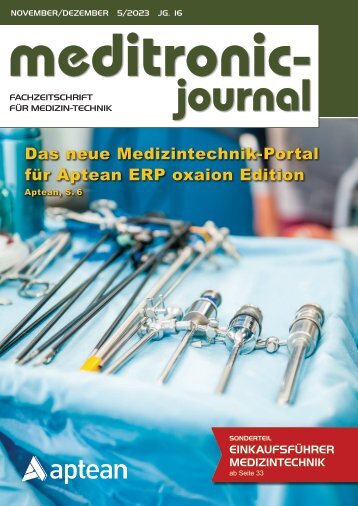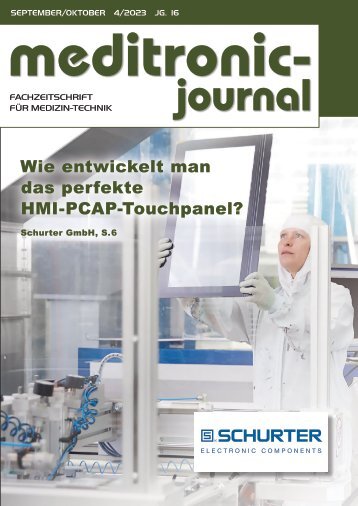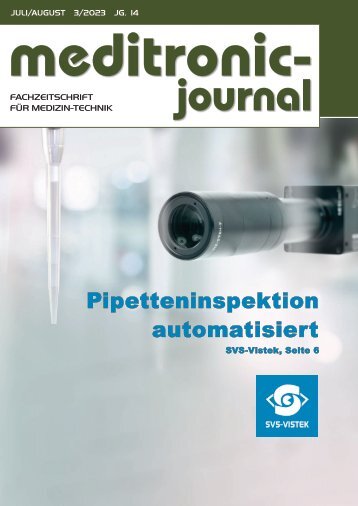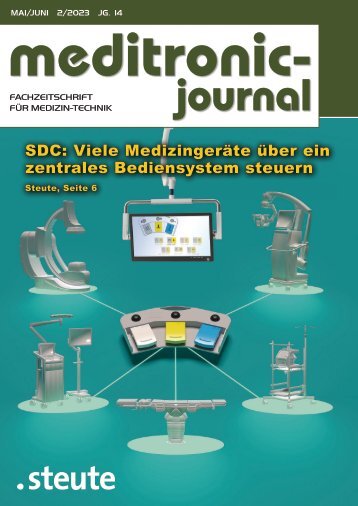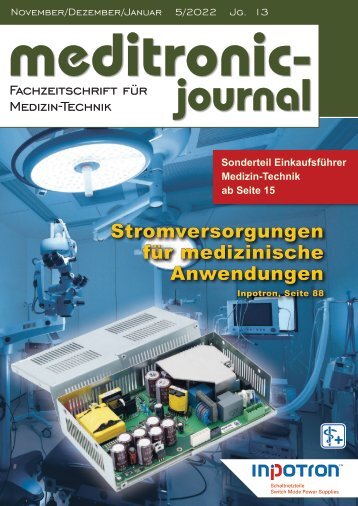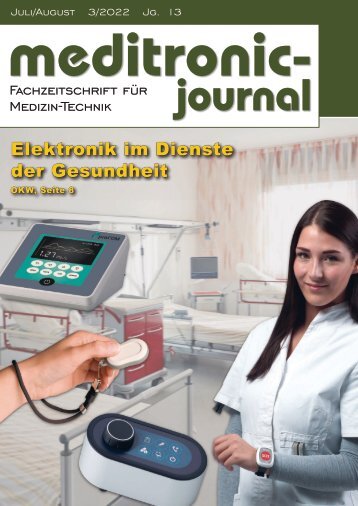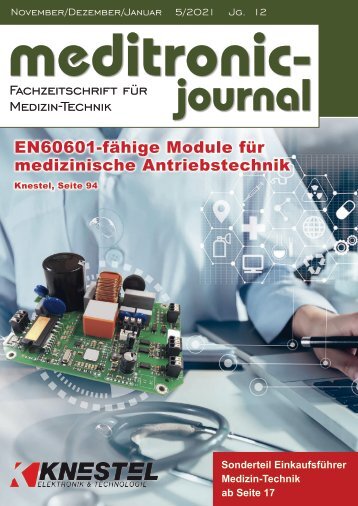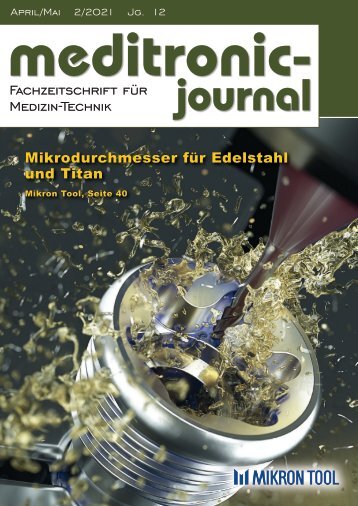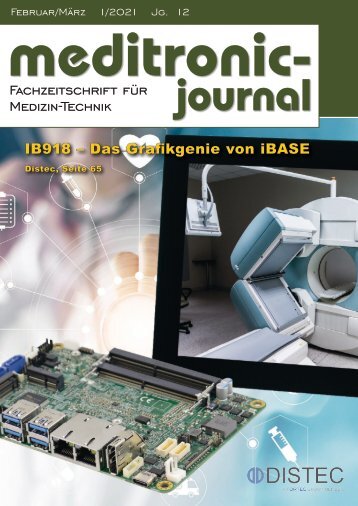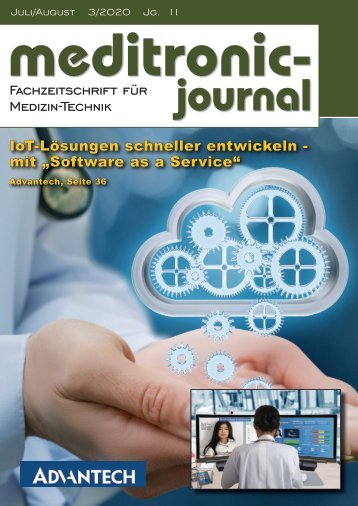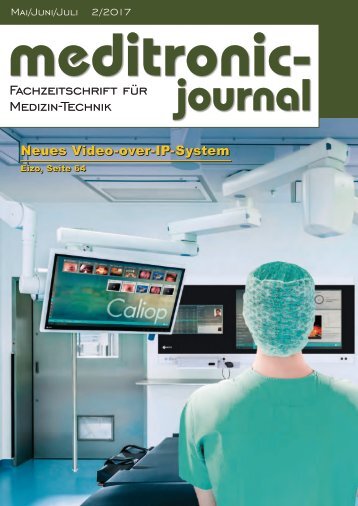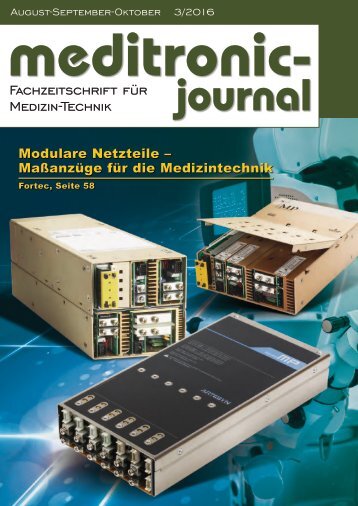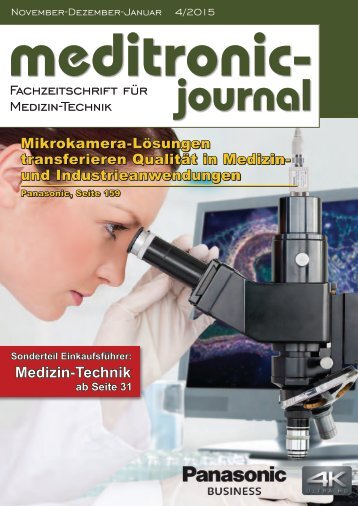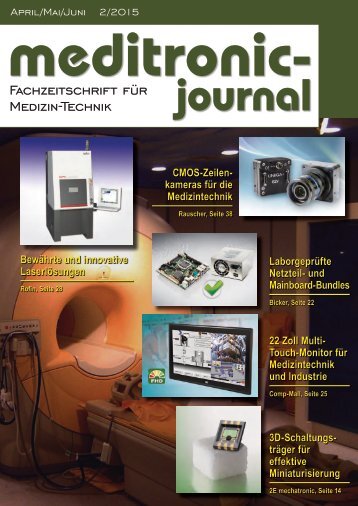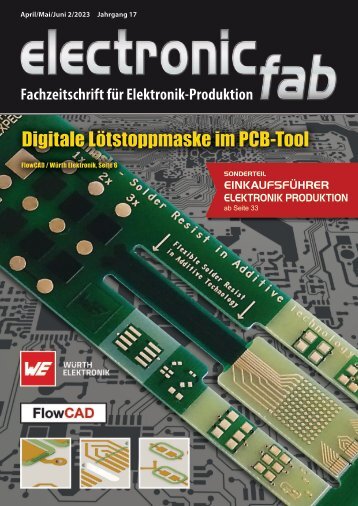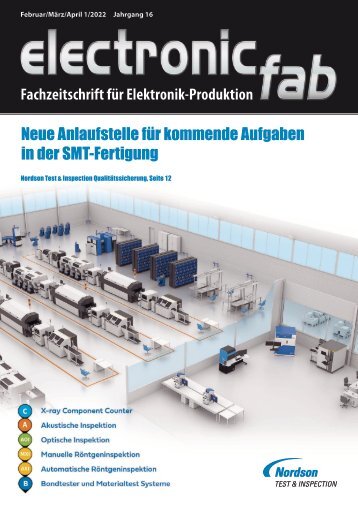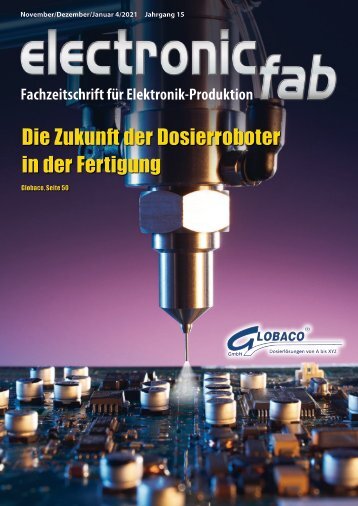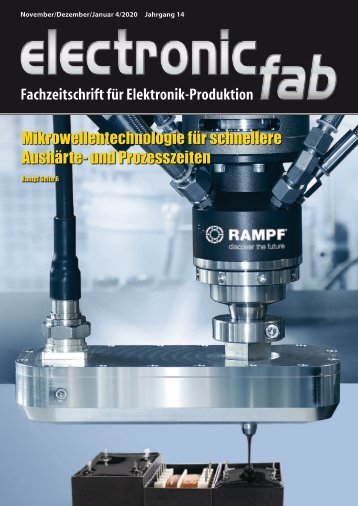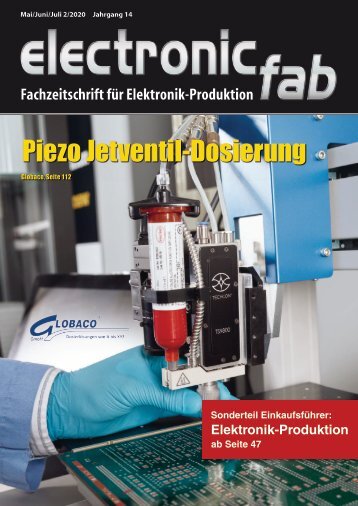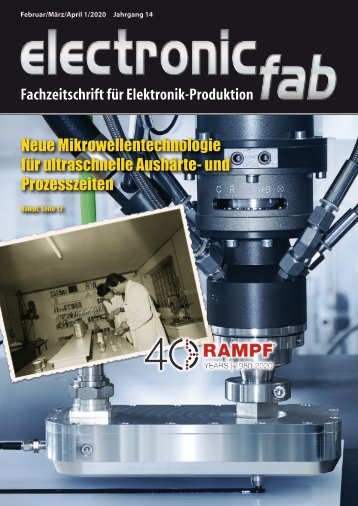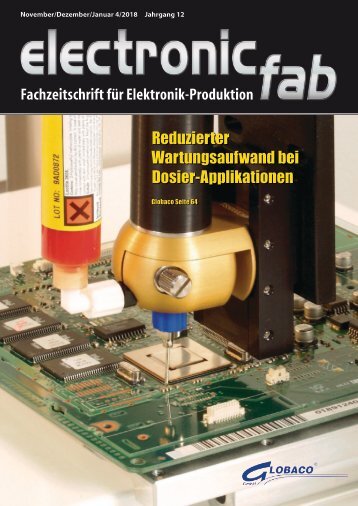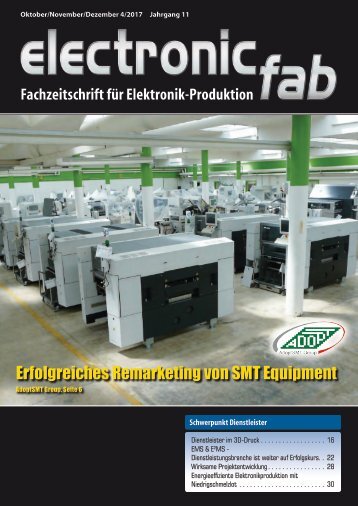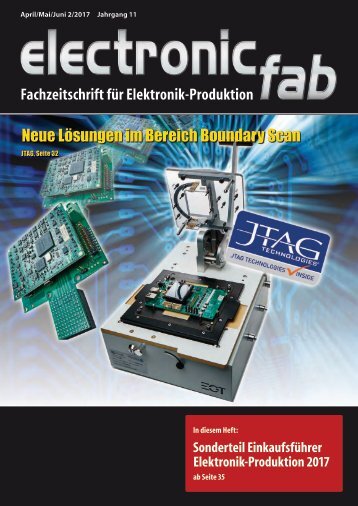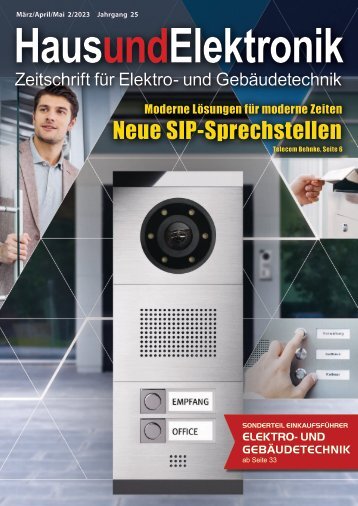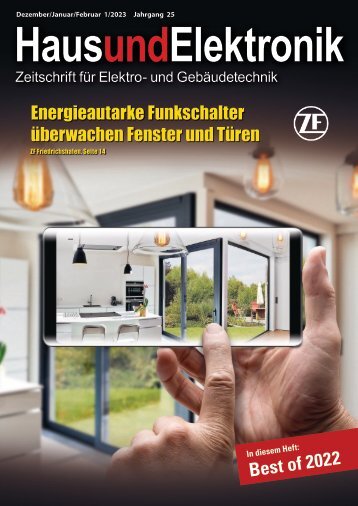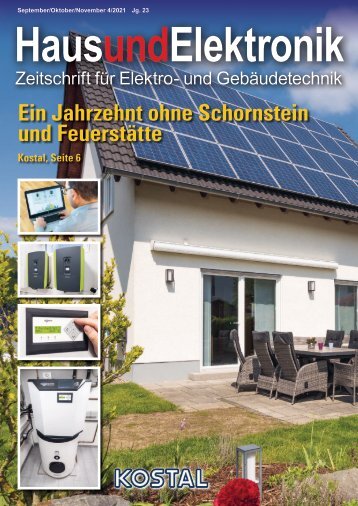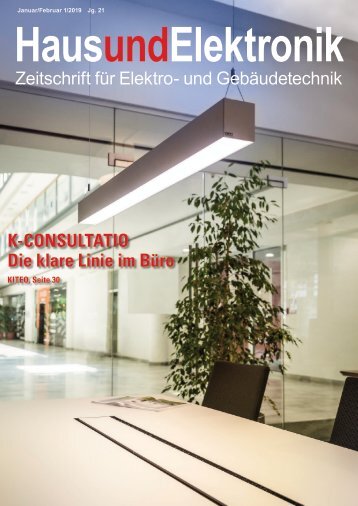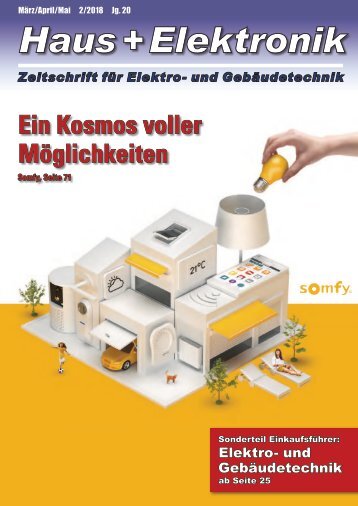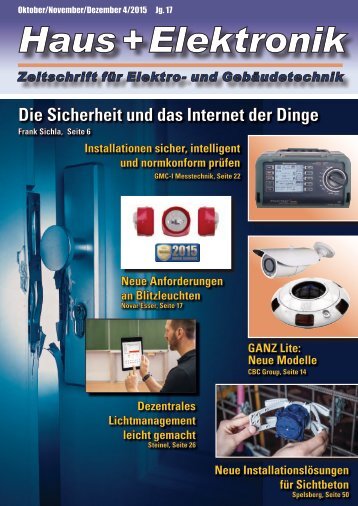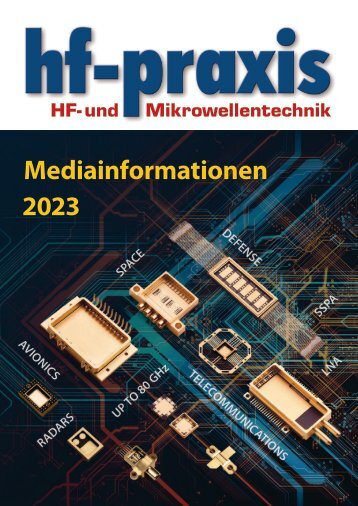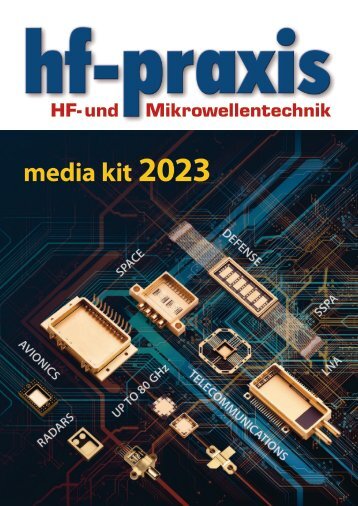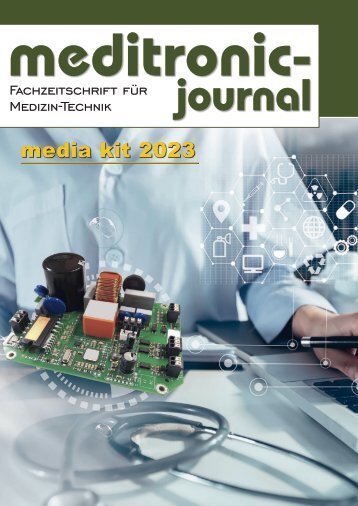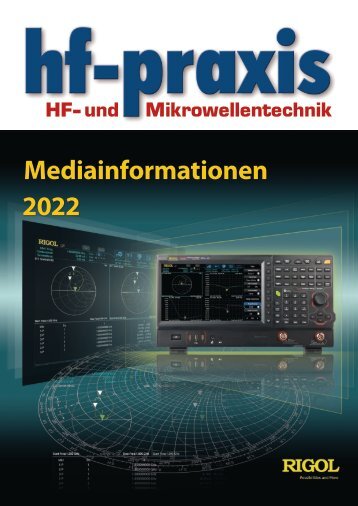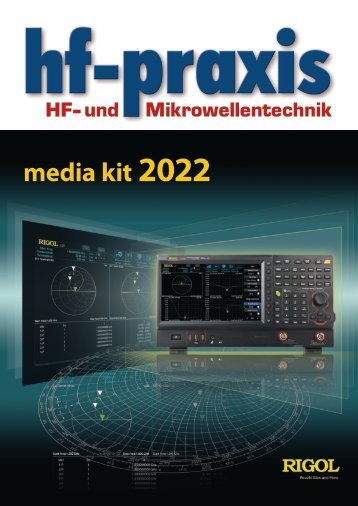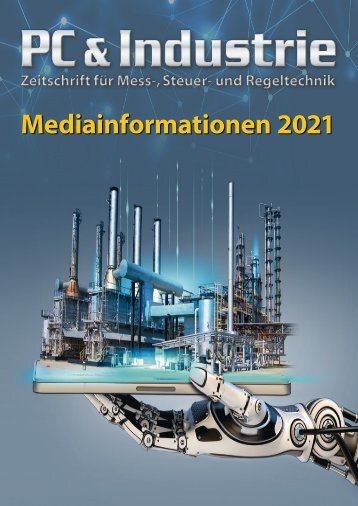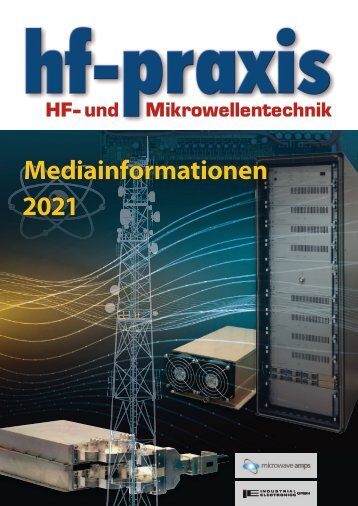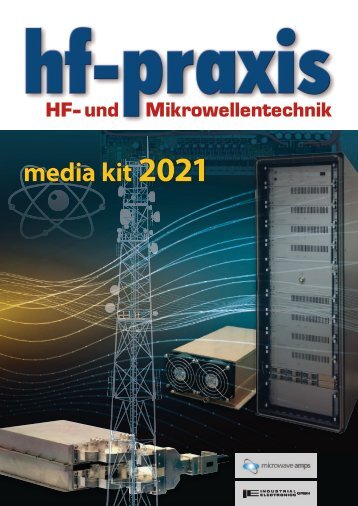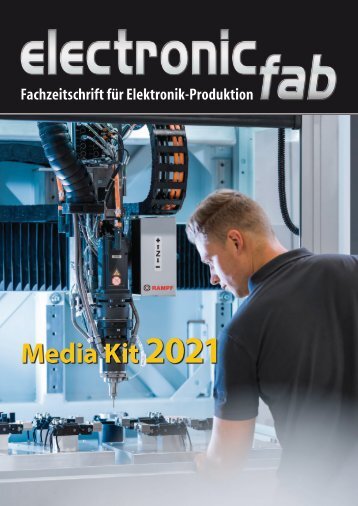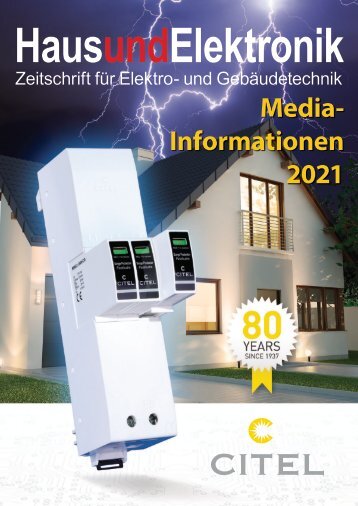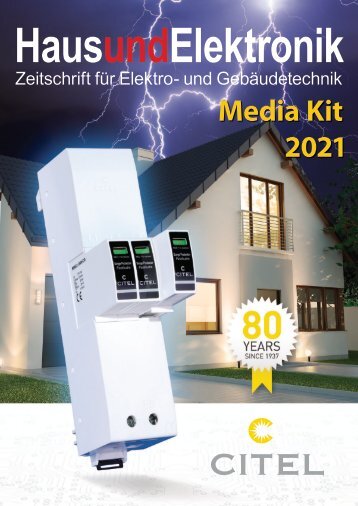Herzlich Willkommen beim beam-Verlag in Marburg, dem Fachverlag für anspruchsvolle Elektronik-Literatur.
Wir freuen uns, Sie auf unserem ePaper-Kiosk begrüßen zu können.
1-2023
- Text
- Anwendungen
- Serie
- Wifi
- Entwicklung
- Leistung
- Keysight
- Unternehmen
- Mmwave
- Funktionen
- Rechenzentren
Fachzeitschrift für Hochfrequenz- und Mikrowellentechnik
Funkchips und -module
Funkchips und -module Funkmodul mit U.FL-Anschluss ergänzt Bluetooth-Portfolio Panasonic kündigte das PAN1770-Modul mit U.FL- Anschluss für externe Antennen an. Es ist bei der endrich Bauelemente Vertriebs GmbH erhältlich. Hintergrund der Entwicklung: Bei vielen Geräten oder Anwendungen können die von der Chip-Antenne abgestrahlten Funkwellen durch das Metallgehäuse oder die Umgebung blockiert oder reflektiert werden. Dadurch wird es schwierig, das Funksignal von außen zu empfangen. Diesem Umstand kann entgegengewirkt werden, wenn die Antenne außerhalb des Gehäuses montiert wird. Das PAN1770 ermöglicht den einfachen Anschluss einer externen Antenne per Kabel. Basierend auf dem Nordic nRF52840, ist es das erste Panasonic-Bluetooth-Modul ohne integrierte Antenne und eine Ergänzung zum PAN1780- Modul. Damit kann zwischen dem PAN1780 mit integrierter Chip-Antenne und dem PAN1770 mit U.FL-Anschluss gewählt werden. Das Modul unterstützt Bluetooth 5.1, Thread und Zigbee (IEEE 802.15.4). Die Unterstützung des Matter-Protokolls ist geplant. Durch die Zertifizierungen CE RED, FCC, ISED und Wirepas kann das Modul in vielen Regionen einfach integriert werden. Weitere Zertifizierungen sind in Vorbereitung. Das stromsparende Modul verwendet einen ARM-Cortex- M4F und eine ARM-Trustzone-Kryptozelle bei einer Datenrate von 2 Mbps und bis zu 48 GPIOs. Typische Anwendungsgebiete sind Smart Home, Smart City, Smart Factory, Altenpflege und Gartenbau. Das Panasonic Wireless Connectivity Development Hub beinhaltet Benutzerhandbücher für alle Evaluierungs- Tools, herunterladbare Schaltpläne der Evaluation Boards (EVBs) als Referenz-Design und Schnellstartanleitungen für die Software-Evaluierung und ist zu erreichen unter https:// pideu.panasonic.de/development-hub/. endrich Bauelemente Vertriebs GmbH www.endrich.de Fachbücher für die Praxis Digitale Oszilloskope Der Weg zum professionellen Messen Joachim Müller Format 21 x 28 cm, Broschur, 388 Seiten, ISBN 978-3-88976-168-2 beam-Verlag 2017, 24,95 € Ein Blick in den Inhalt zeigt, in welcher Breite das Thema behandelt wird: • Verbindung zum Messobjekt über passive und aktive Messköpfe • Das Vertikalsystem – Frontend und Analog-Digital-Converter • Das Horizontalsystem – Sampling und Akquisition • Trigger-System • Frequenzanalyse-Funktion – FFT • Praxis-Demonstationen: Untersuchung von Taktsignalen, Demonstration Aliasing, Einfluss der Tastkopfimpedanz • Einstellungen der Dezimation, Rekonstruktion, Interpolation • Die „Sünden“ beim Masseanschluss • EMV-Messung an einem Schaltnetzteil • Messung der Kanalleistung Weitere Themen für die praktischen Anwendungs-Demos sind u.a.: Abgleich passiver Tastköpfe, Demonstration der Blindzeit, Demonstration FFT, Ratgeber Spektrumdarstellung, Dezimation, Interpolation, Samplerate, Ratgeber: Gekonnt triggern. Im Anhang des Werks findet sich eine umfassende Zusammenstellung der verwendeten Formeln und Diagramme. Unser gesamtes Buchprogramm finden Sie unter www.beam-verlag.de oder bestellen Sie über info@beam-verlag.de
Anritsu, dSPACE and Apposite Technologies Collaborate to Realize an AVP Test Environment for Autonomous Driving Use Cases Anritsu Corporation (President: Hirokazu Hamada) has developed a test and simulation environment for Automated Valet Parking (AVP) in collaboration with dSPACE GmbH (dSPACE) and Apposite Technologies LLC (Apposite). A demonstration exhibition was held as part of the 5GAA Member Symposium event in Malaga, Spain on October 20th. Valet parking is a service in which a professional parking attendant parks drivers’ cars at large-scale parking facilities and commercial facilities, mainly in Europe and the United States. AVP enables this parking to be done automatically, without any driver in the vehicle. AVP Technical Report Version 1.0 was released by 5GAA in June 2022, and a wireless communication (Type-2) operation scheme linked with parking garage infrastructure and users’ smartphones was proposed. AVP is being developed as an autonomous driving use case which can be deployed in the short term. AVP Type-1 autonomous driving vehicles require expensive high-performance computing and sensing, while AVP Type-2 communication-cooperative vehicles do not require such installations, reducing vehicle costs and making implementation easier. Since AVP Type-2 requires highly reliable end-to-end communications, a test system needs to evaluate QoS management and impairment effects in the IP layer. The wireless connectivity environment also needs to be evaluated. The test solution set up a digital twin environment incorporating both virtual and real devices. This allows the system tests and certification required to improve the reliability of AVP Type-2 to be started before the actual devices are available. Automotive OEMs, Tier 1 suppliers, and mobile network operators have shown great interest in the demonstration, and we will continue to develop this simulation environment and contribute to the realization of AVP. dSPACE‘s software-based tool integrates and simulates environment/infrastructure/sensor/vehicle information only on a PC. In this demonstration, AVP System is installed in it. Vehicle motion control commands (VMC) generated by the AVP System are transmitted to the OEM Application, which displays the state of vehicle control, via 5G communication using Anritsu‘s 5G base station simulator. VMC commands pass through the Apposite Network emulator on the way to OEM Application. IP data delay and data packet loss are added by the emulator, and so vehicle control becomes unstable due to its influence in the OEM Application. AVP developers design control systems and networks to keep vehicle control stable. A virtual vehicle that has received VMC (Vehicle Motion Control) commands across the 5G network is automatically driving in a parking lot according to control instructions sent by the parking garage. The base station simulator Radio communication test station MT8000A is a test platform that provides network simulation for 5G radio access technology (RAT*6) and provides a development evaluation and certification test environment for automotive use cases such as Telematics, Infotainment, and V2X. Anritsu Corporation www.anritsu.com hf-praxis 1/2023 35
- Seite 1 und 2: Januar 1/2023 Jahrgang 28 HF- und M
- Seite 3 und 4: Editorial Ich geh´ dann mal Strom
- Seite 5 und 6: International News Neues Scope unte
- Seite 7 und 8: 0.05 MHz TO 95 GHz High-Frequency A
- Seite 9 und 10: Outdoor Echtzeit-Spektrumanalysator
- Seite 11 und 12: Titelstory cken gehören alternativ
- Seite 13 und 14: RF-Lambda Europe GmbH ● +49 69 15
- Seite 15 und 16: RF-Lambda Europe GmbH ● +49 69 15
- Seite 17 und 18: RF-Lambda Europe GmbH ● +49 69 15
- Seite 19 und 20: U S M S R P $ 8995 300 KHZ TO 6 GHZ
- Seite 21 und 22: 5G/6G und IoT ideale Zugangstechnol
- Seite 23 und 24: Messtechnik Multifunktionaler Spekt
- Seite 25 und 26: Messtechnik Vielseitiger MIMO-Teste
- Seite 27 und 28: Bauelemente Koaxialverstärker für
- Seite 29 und 30: KNOW-HOW VERBINDET Kleine, robuste
- Seite 31 und 32: Quarze und Oszillatoren Allianz zwi
- Seite 33: Funkchips und -module Hochpräzise
- Seite 37 und 38: RF & Wireless Market Ready End-to-e
- Seite 39 und 40: HF- und Mikrowellentechnik BEST OF
- Seite 41 und 42: Best of 5G und IoT Millimeterwellen
- Seite 43 und 44: Best of 5G und IoT Infrastruktur ei
- Seite 45 und 46: Best of Messtechnik das Decodieren
- Seite 47 und 48: Best of Messtechnik Nahtlose Unters
- Seite 49 und 50: PROPRIETARY TECHNOLOGIES LTCC Filte
- Seite 51 und 52: Best of Messtechnik 5G-Millimeterwe
- Seite 53 und 54: Best of Messtechnik Handheld-Signal
- Seite 55 und 56: Best of Messtechnik Bislang leistun
- Seite 57 und 58: Best of Funkchips und -module Mobil
- Seite 59 und 60: Best of Quarze und Oszillatoren Com
- Seite 61 und 62: The Industry’s Broadest Technolog
- Seite 64: GLOBES Elektronik GmbH & Co KG HEIL
Unangemessen
Laden...
Magazin per E-Mail verschicken
Laden...
Einbetten
Laden...
hf-praxis
PC & Industrie
meditronic-journal
electronic fab
Haus und Elektronik
Mediadaten
© beam-Verlag Dipl.-Ing. Reinhard Birchel

